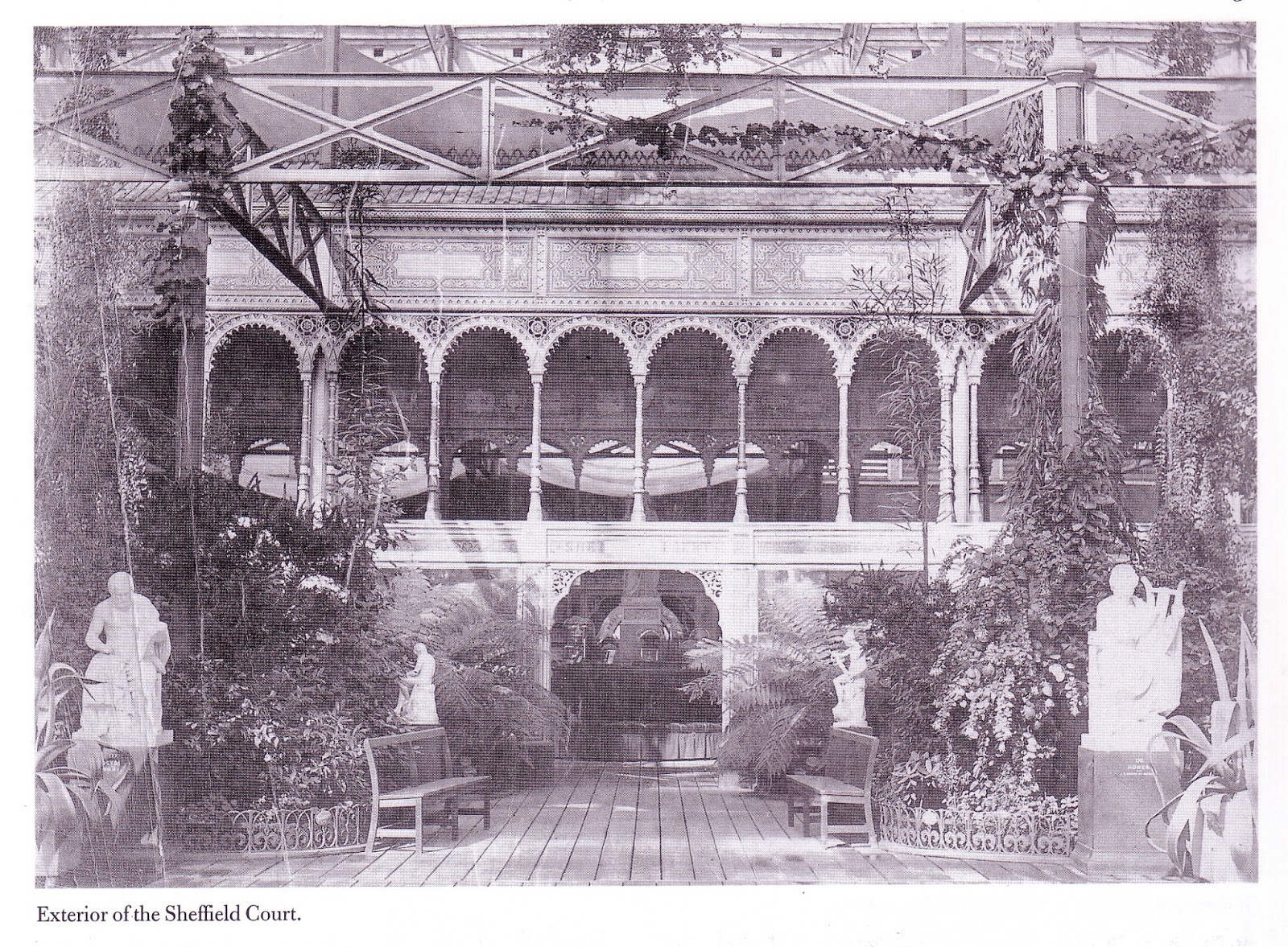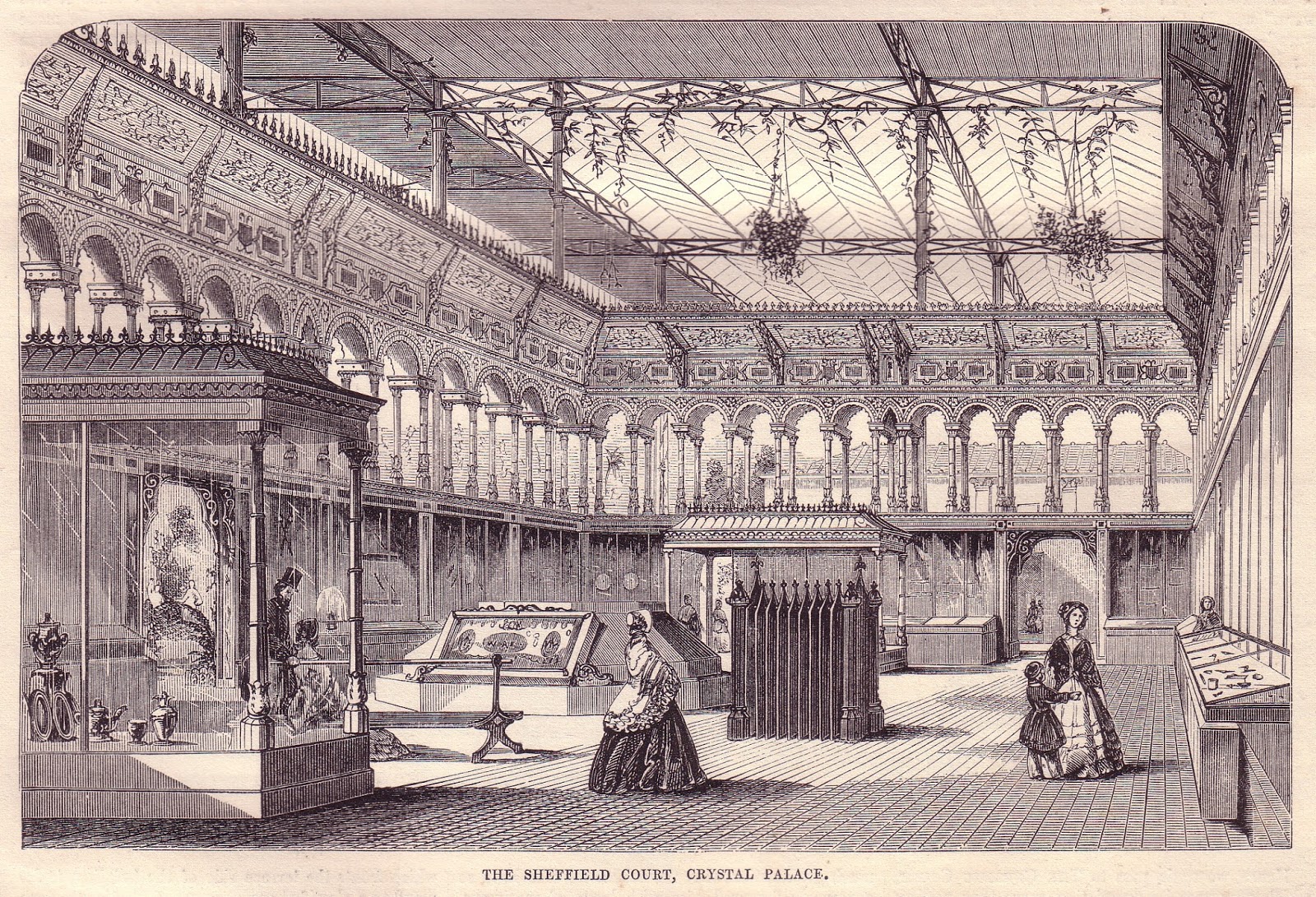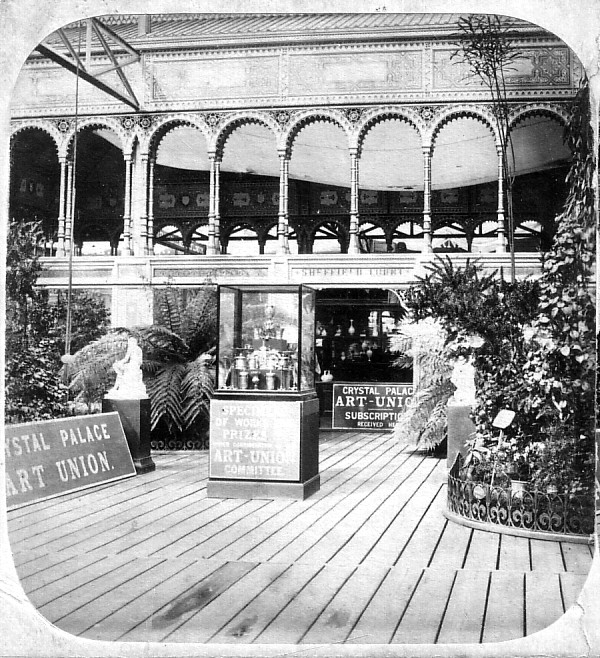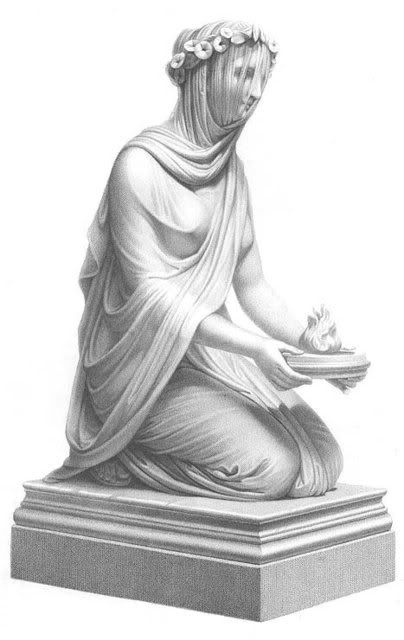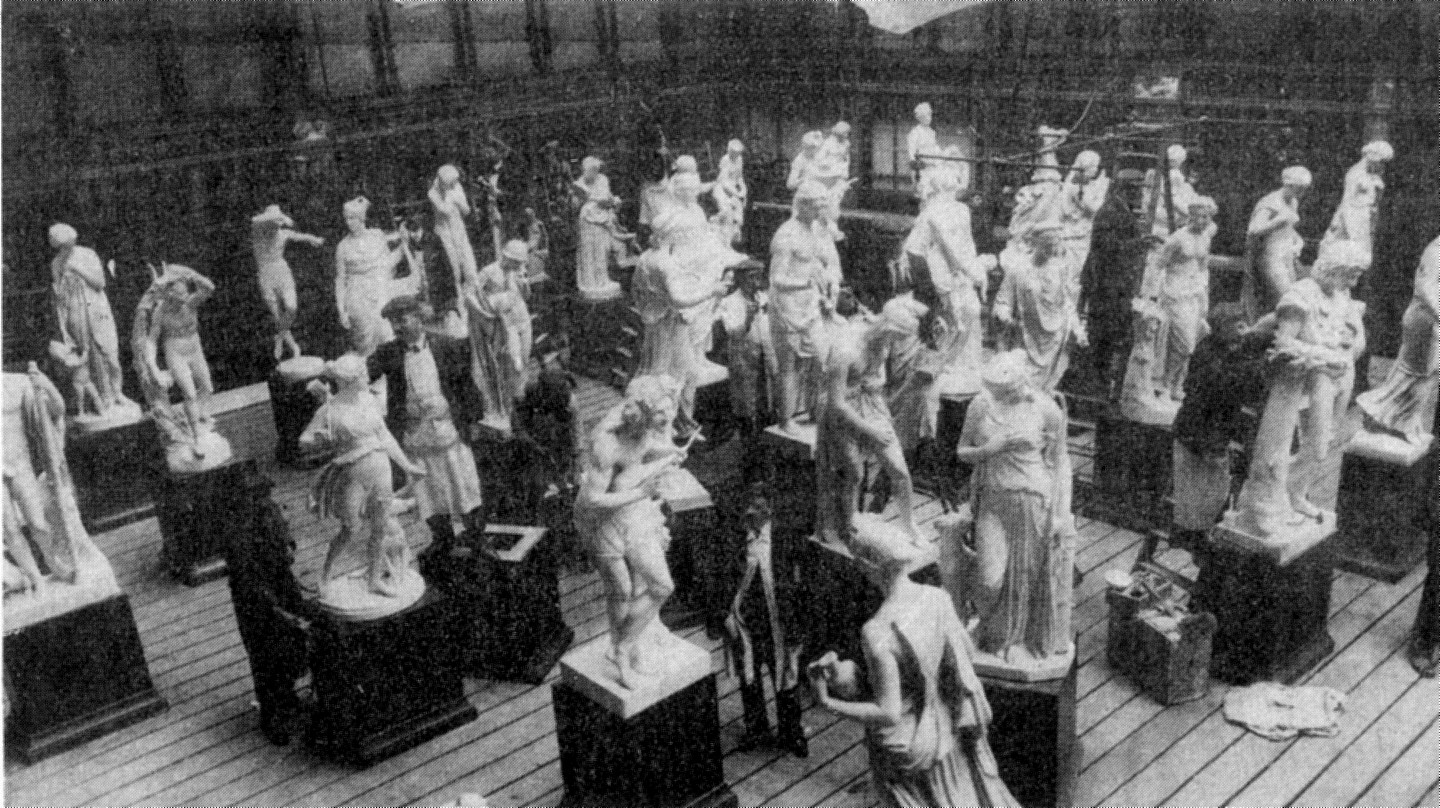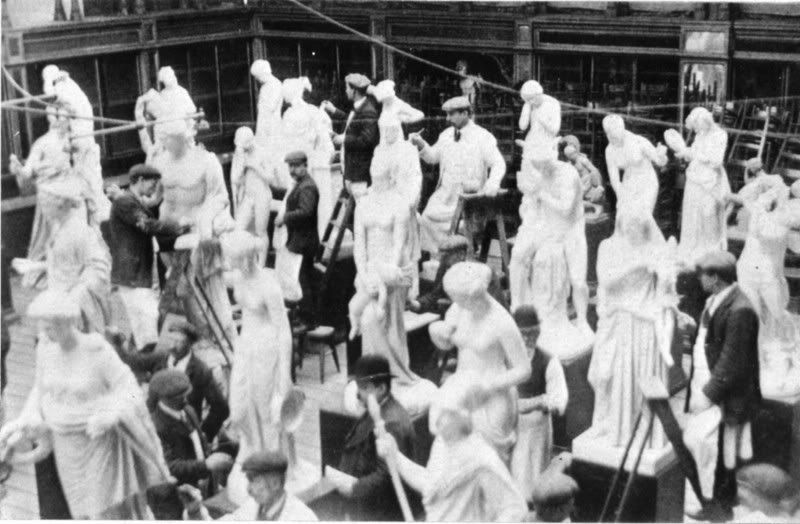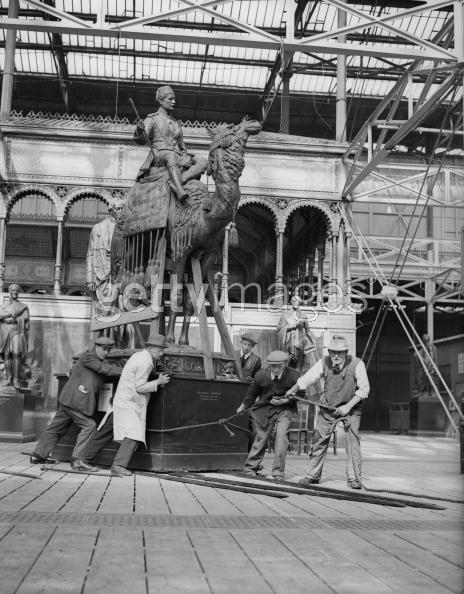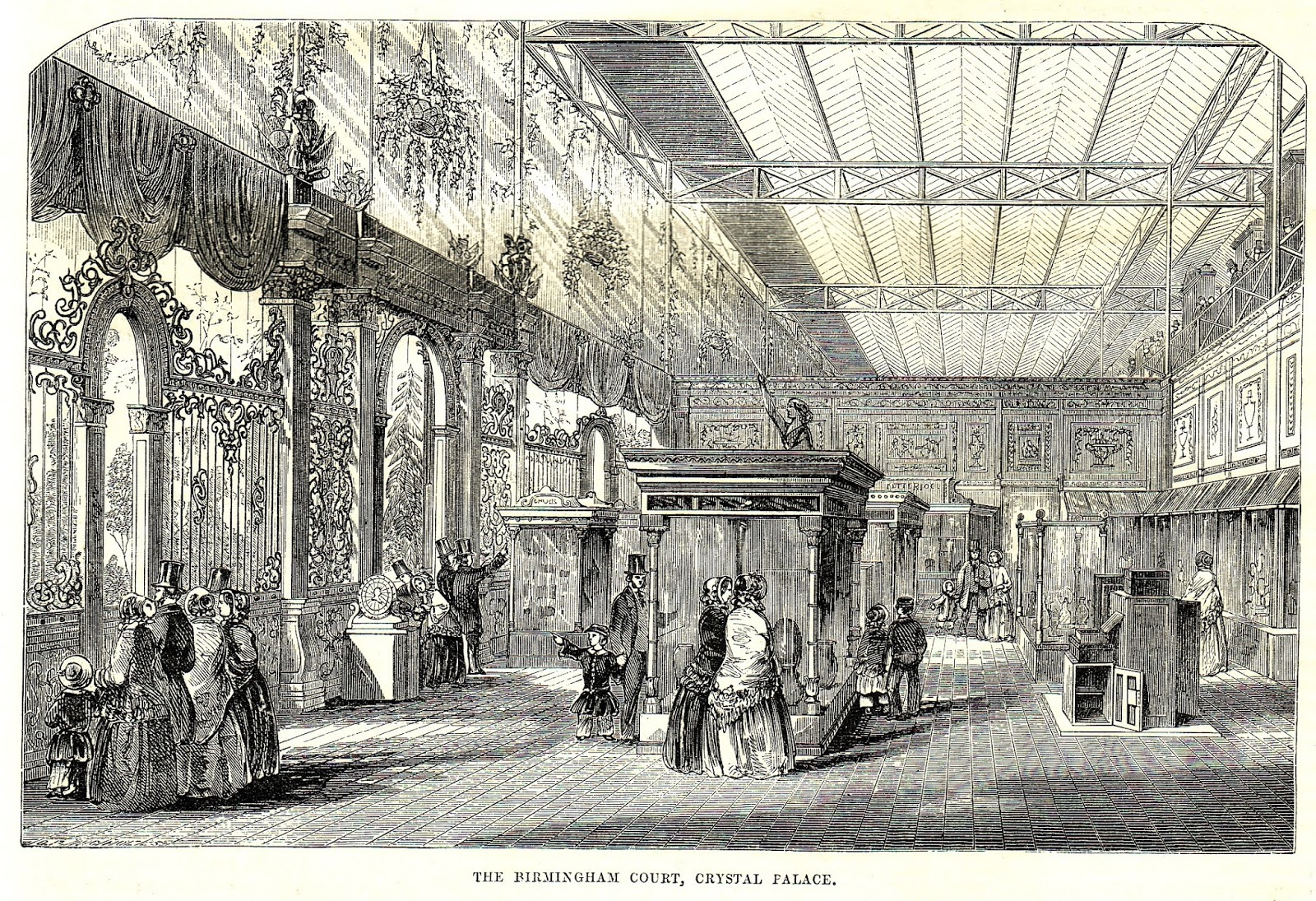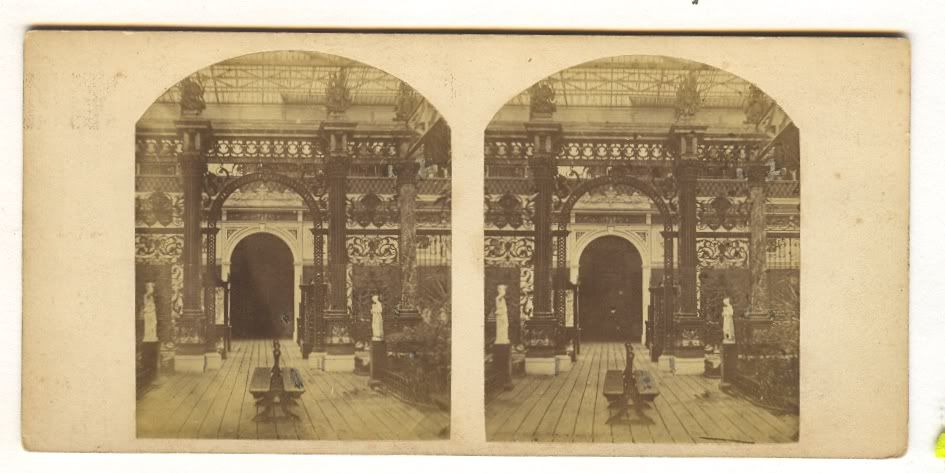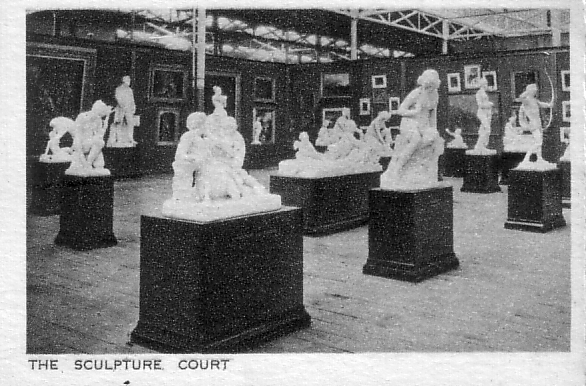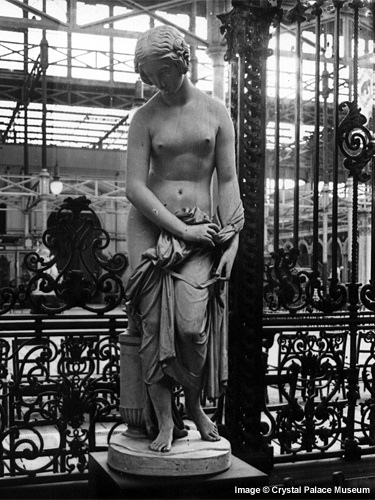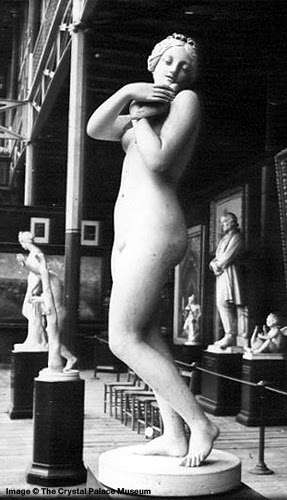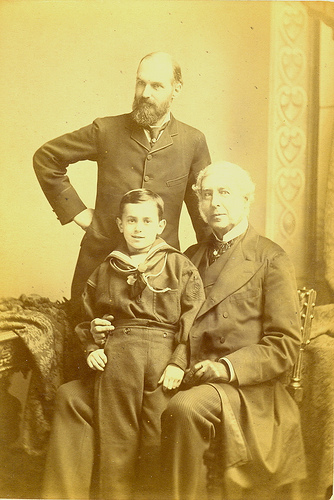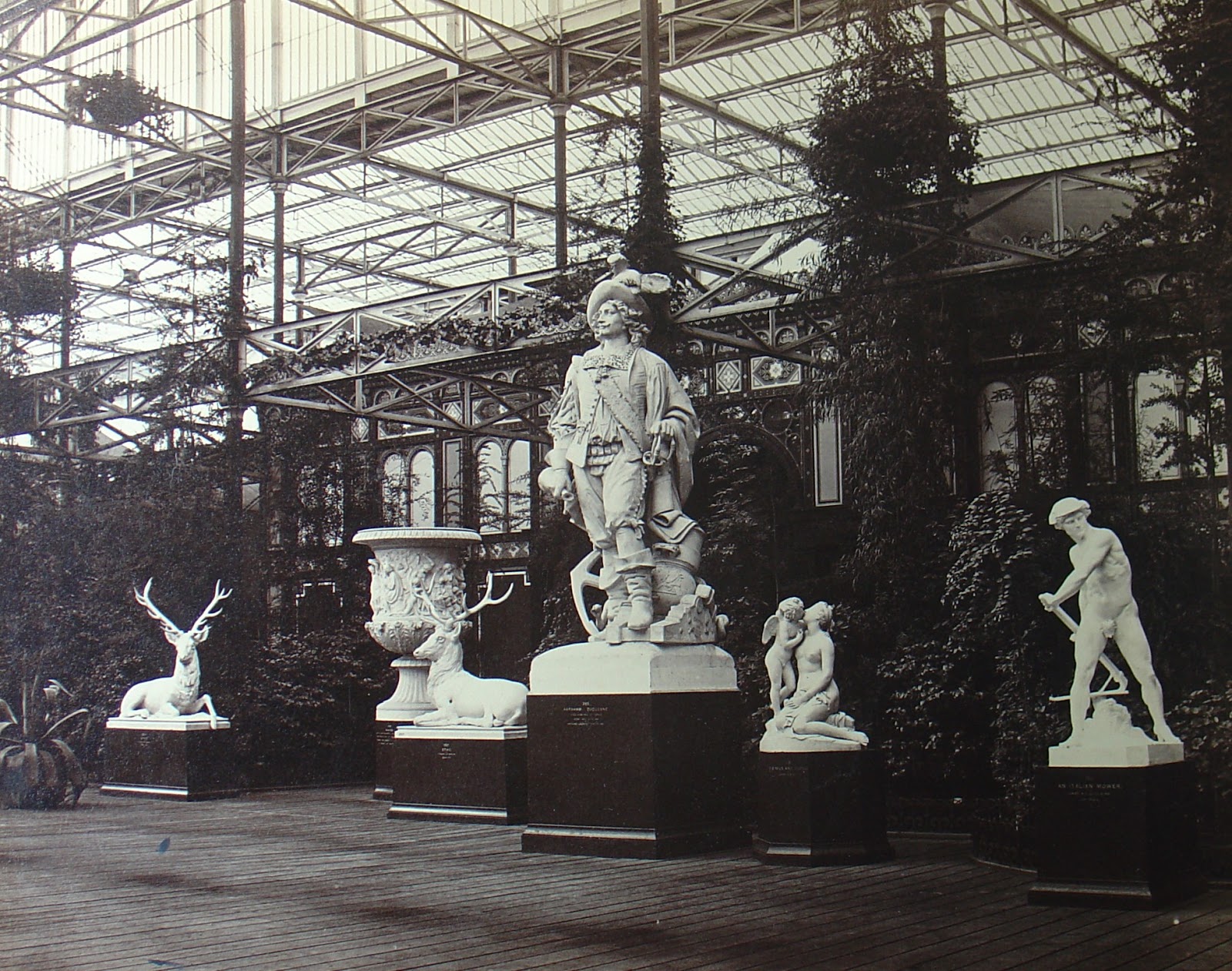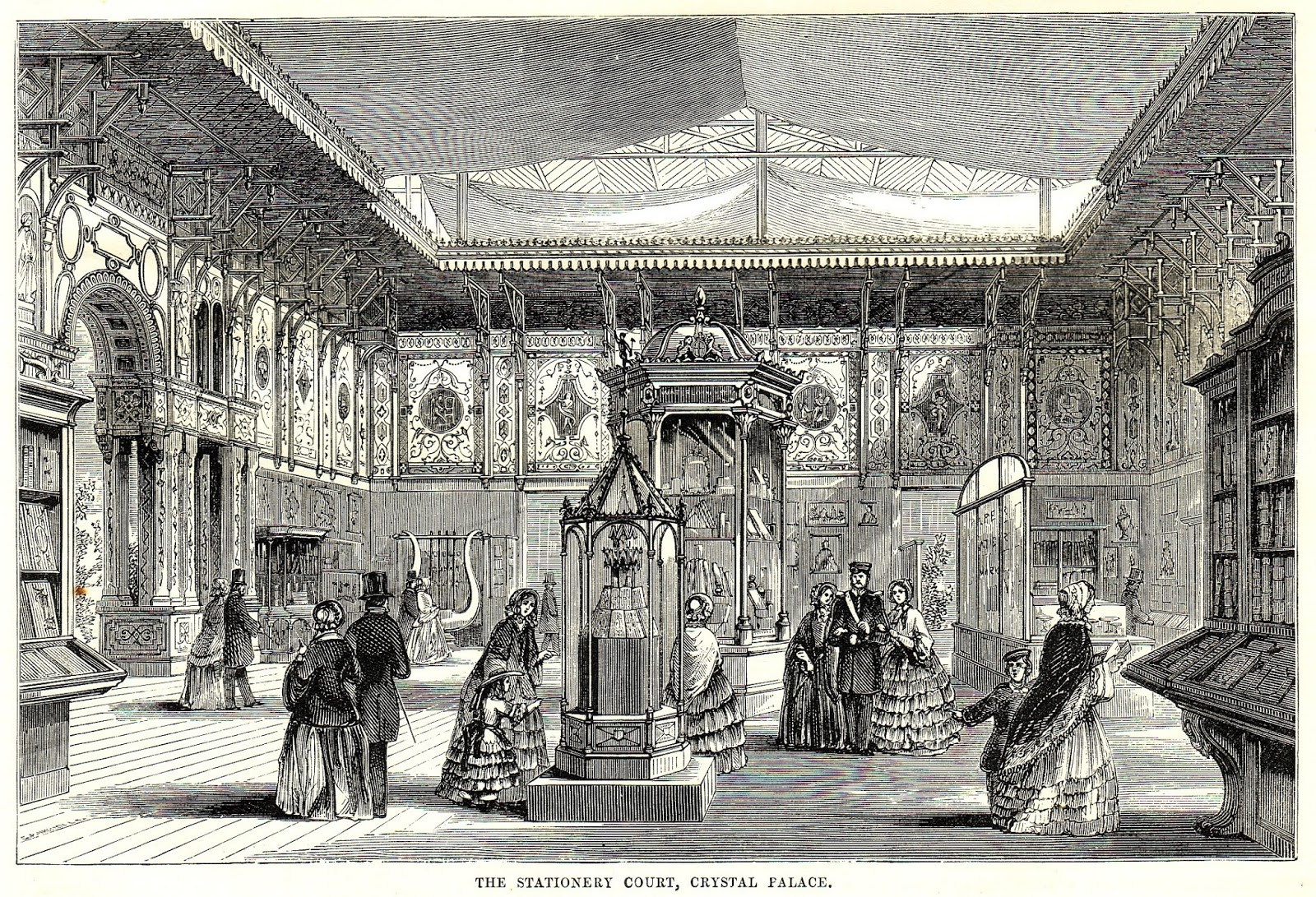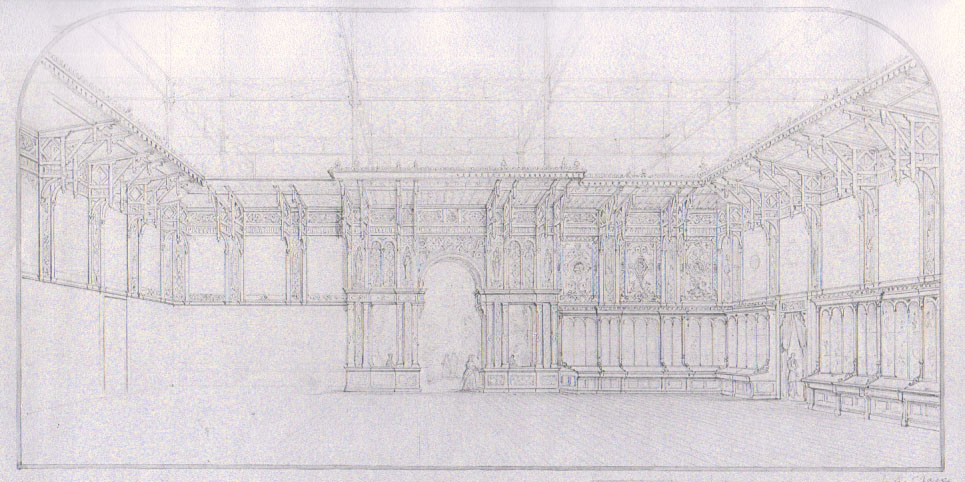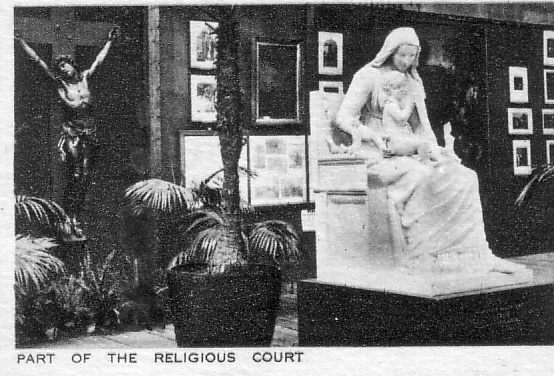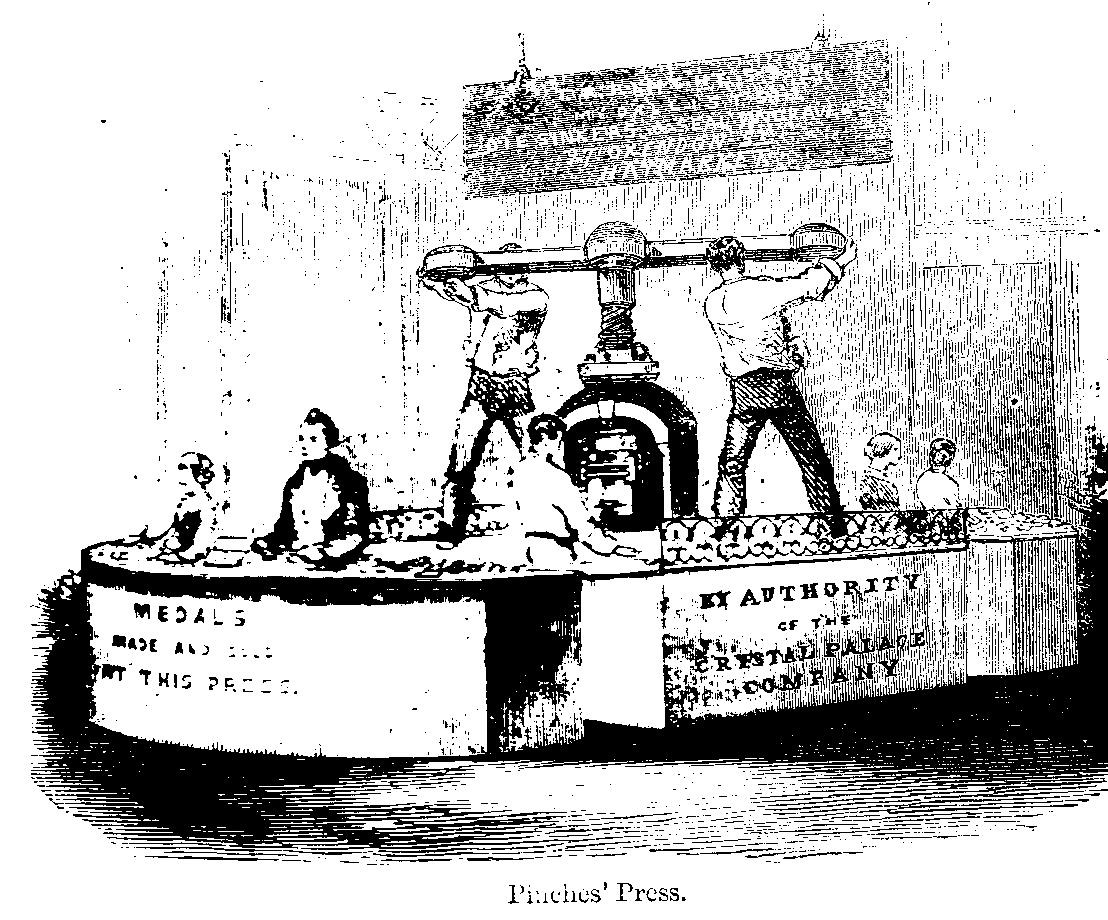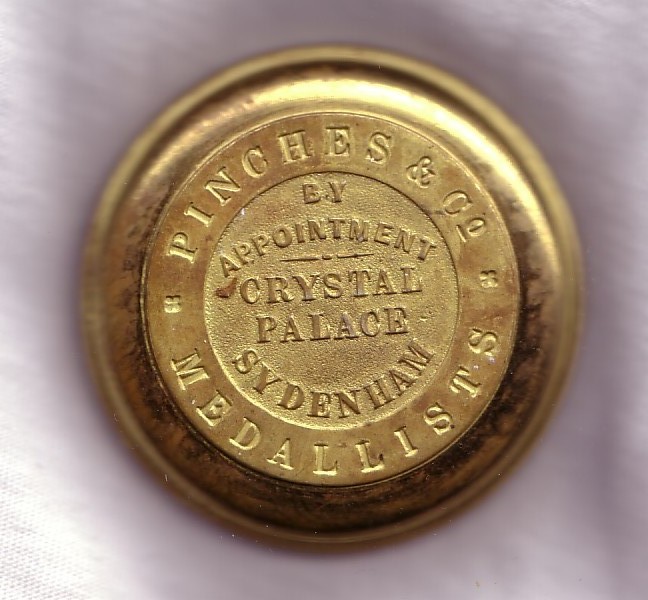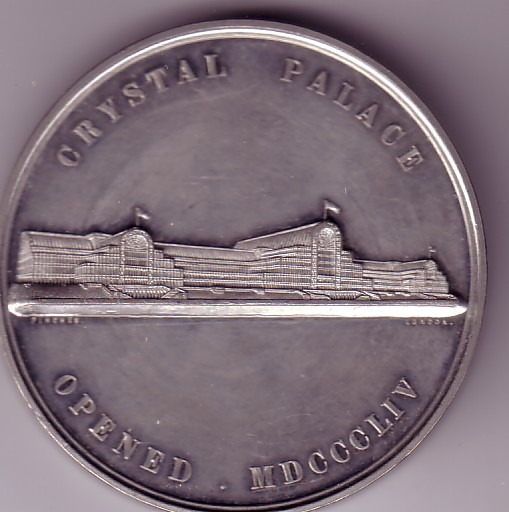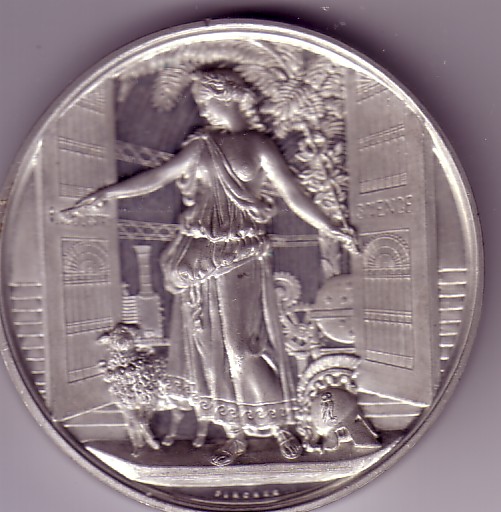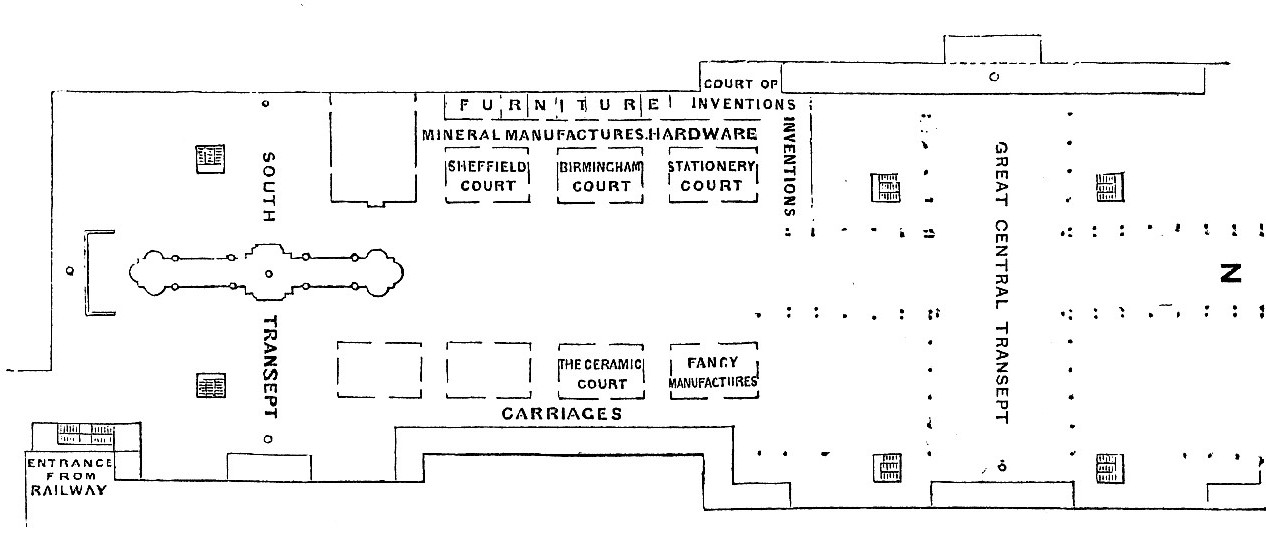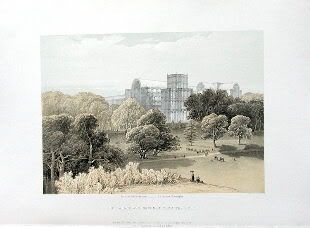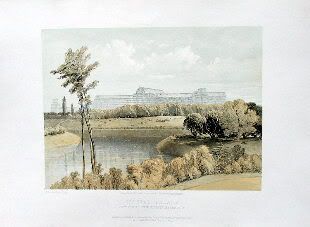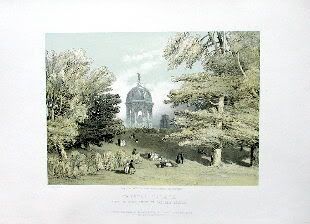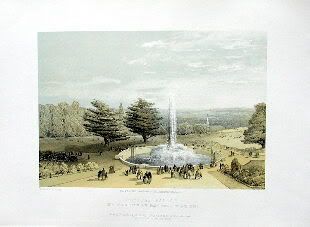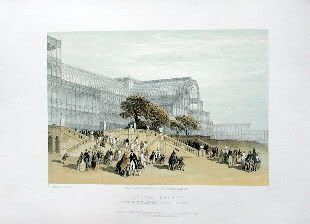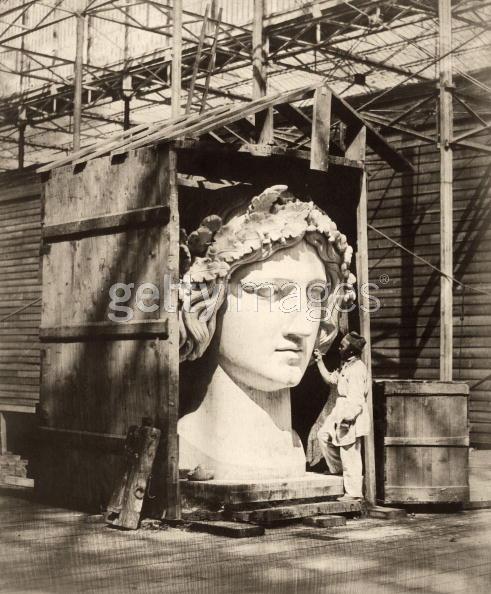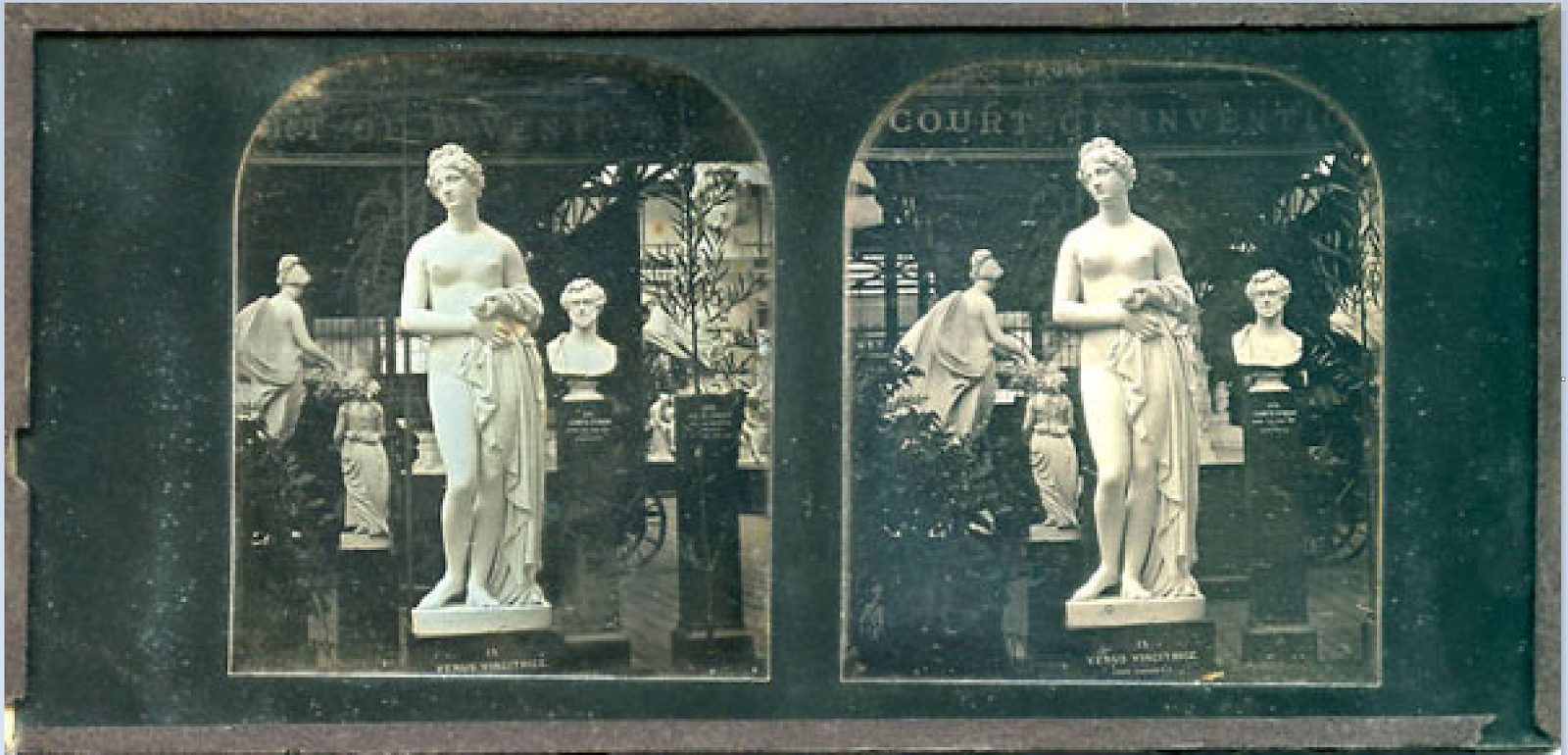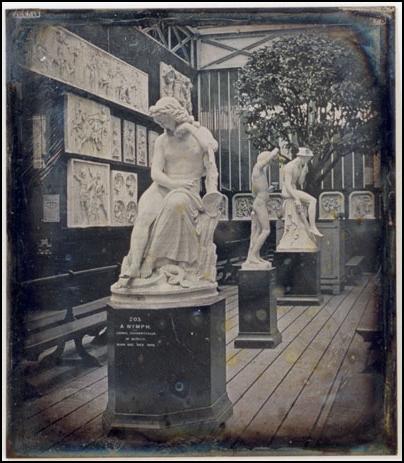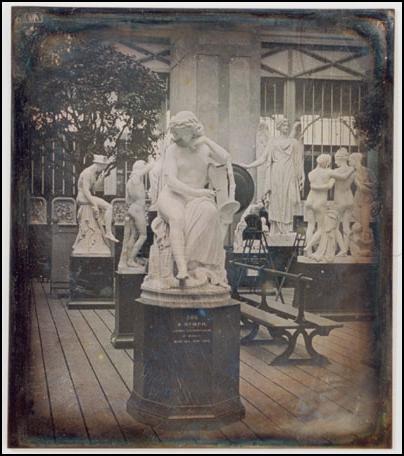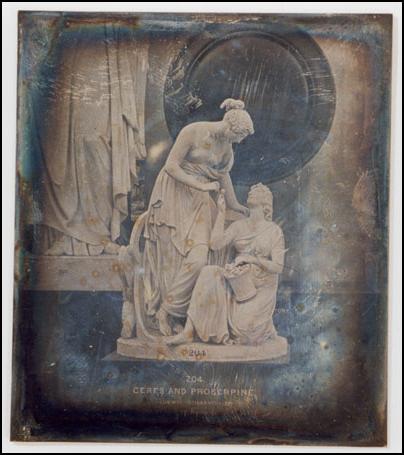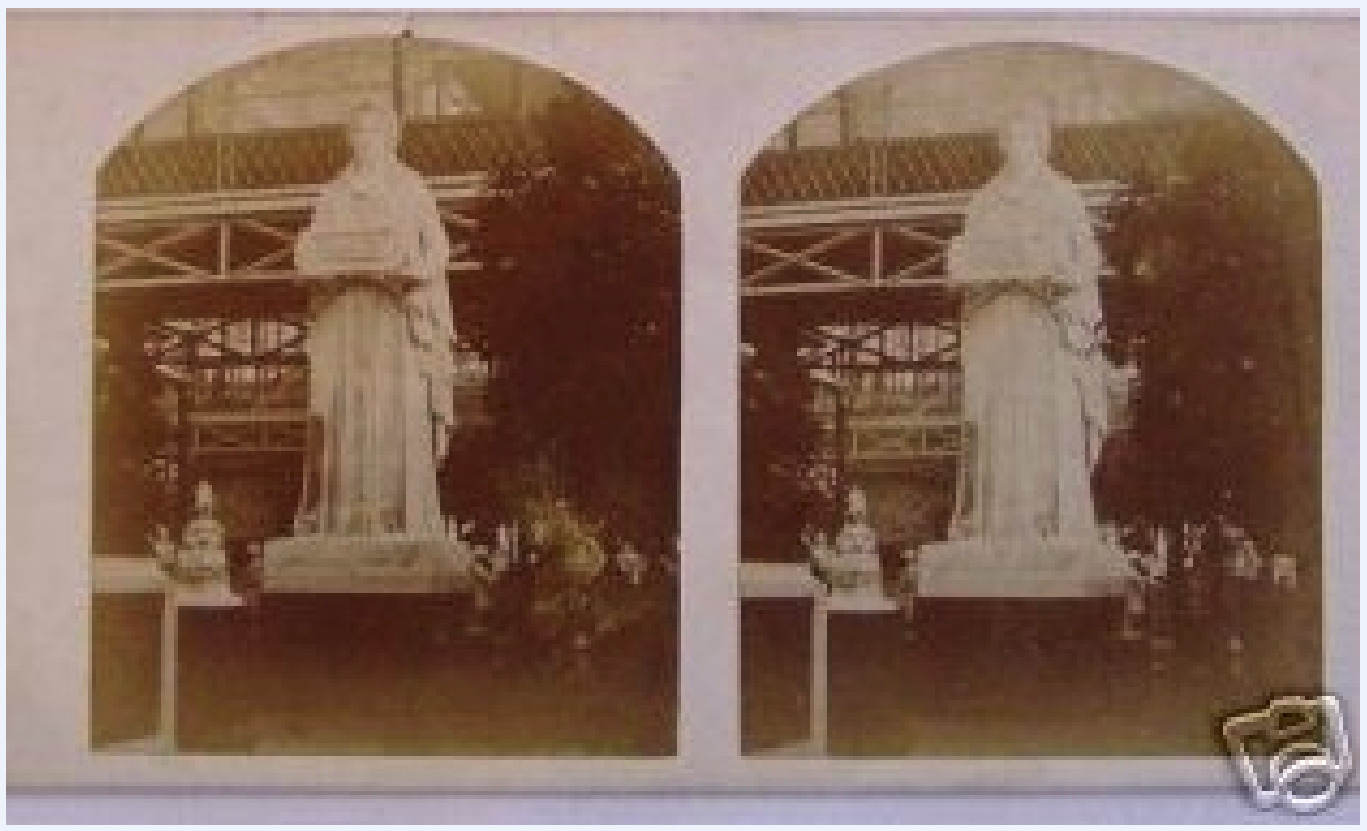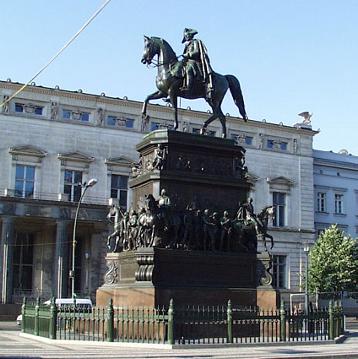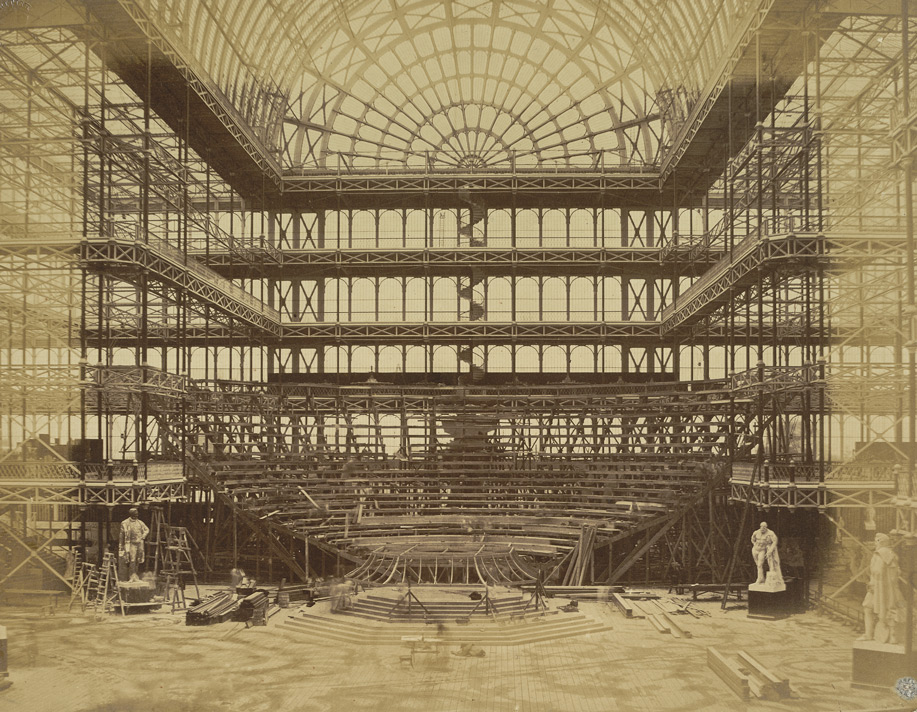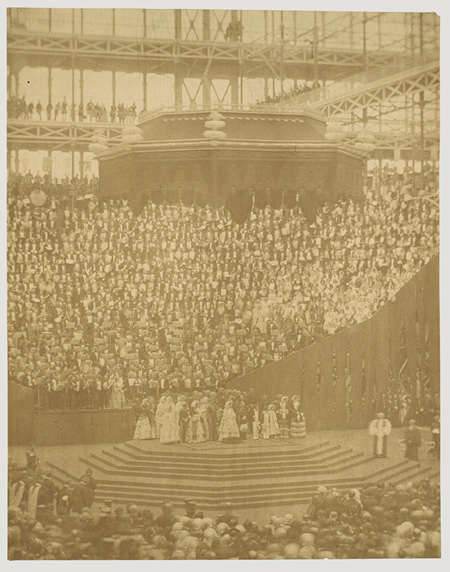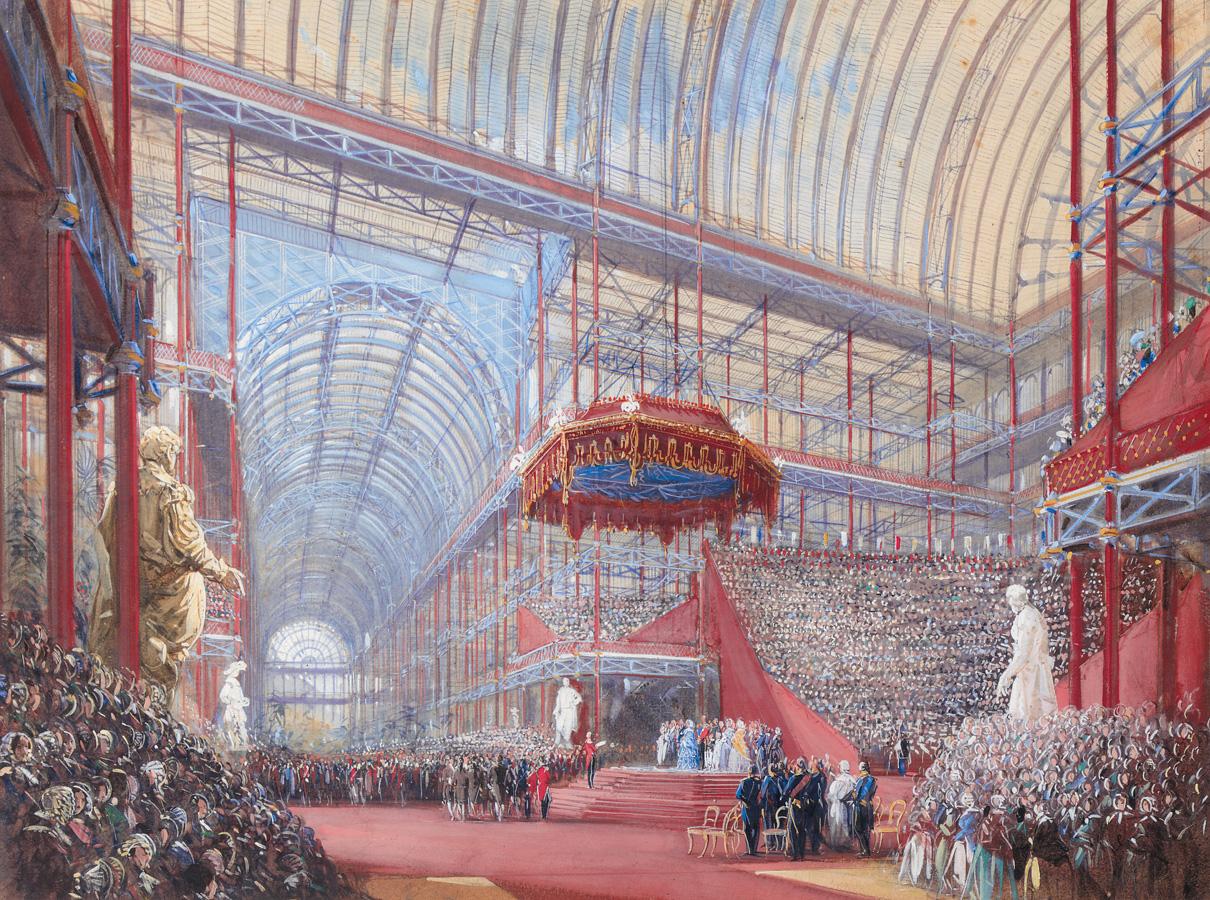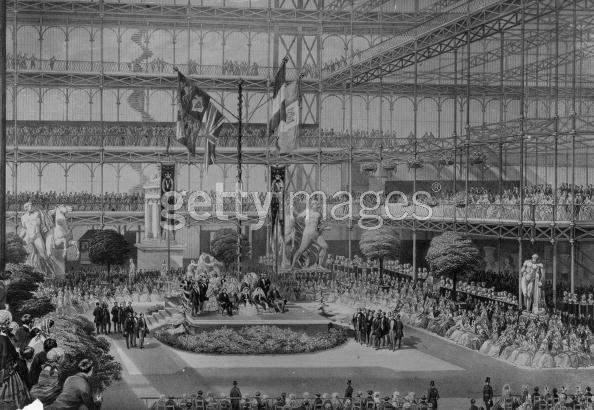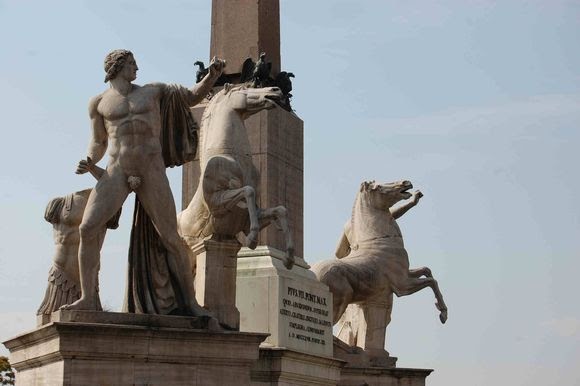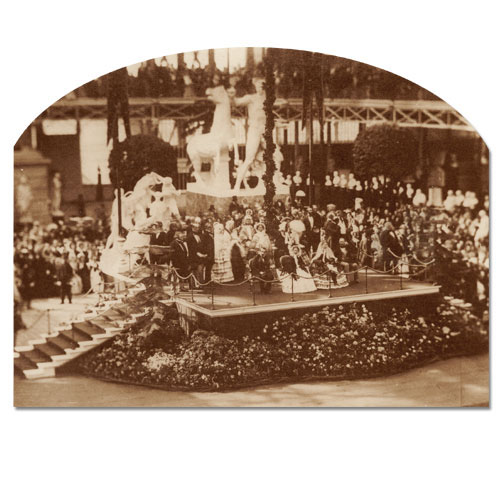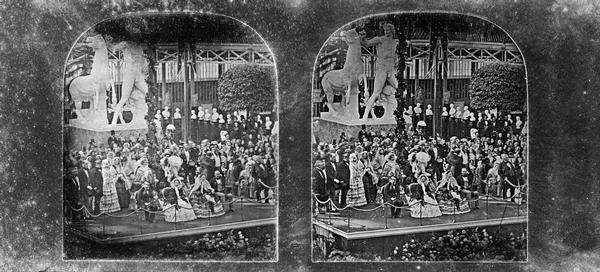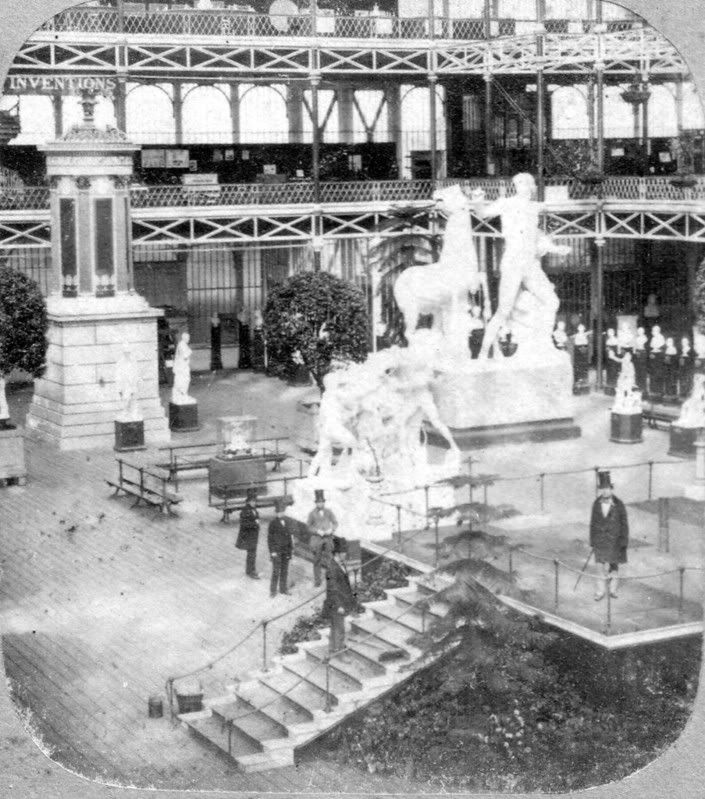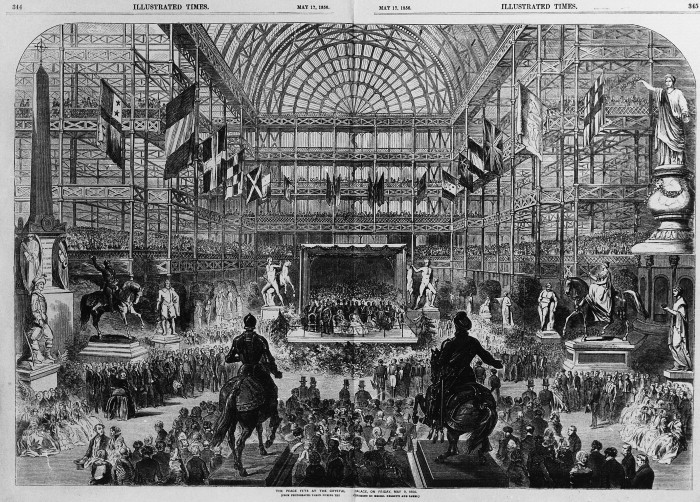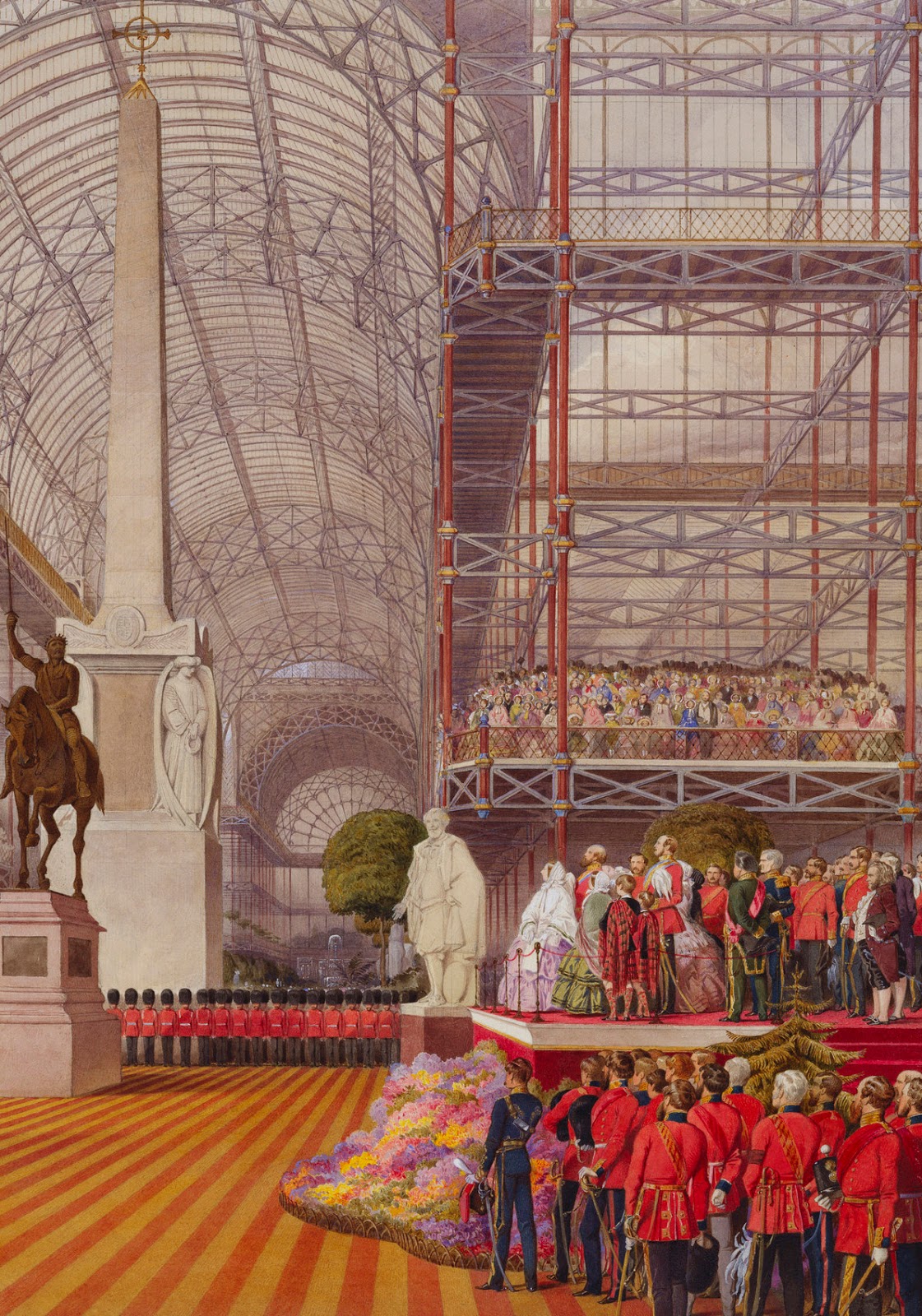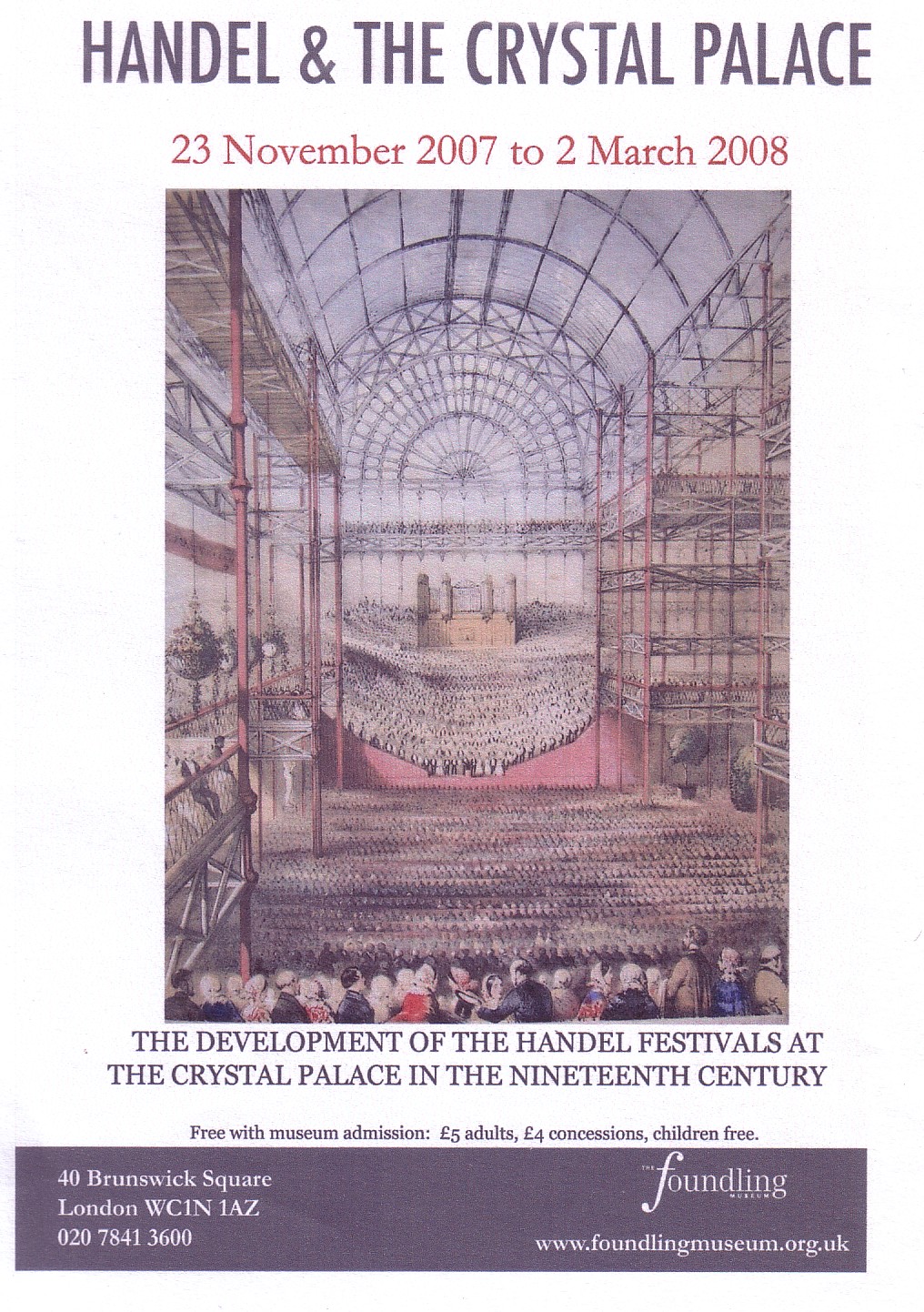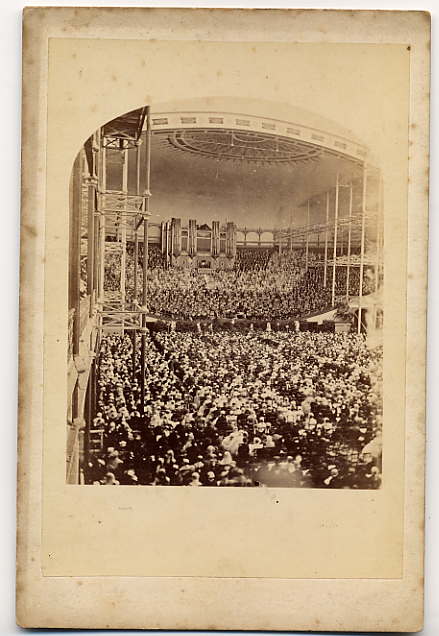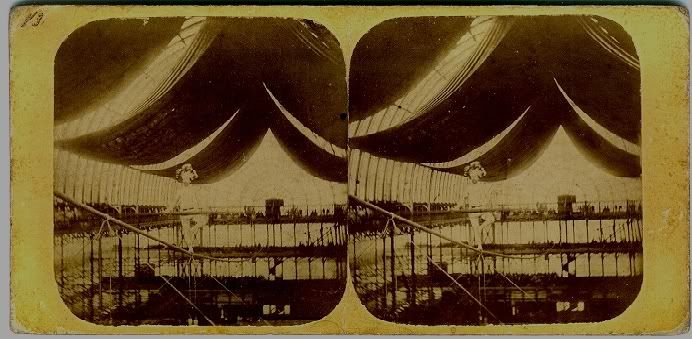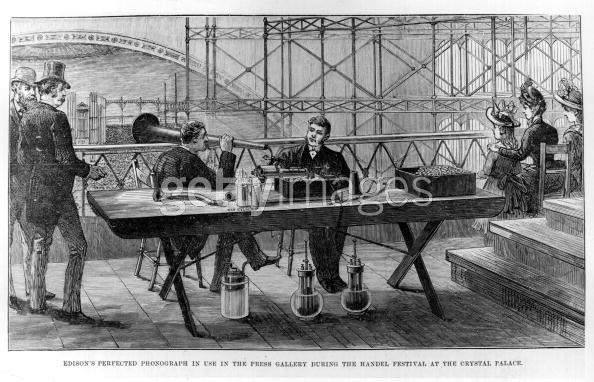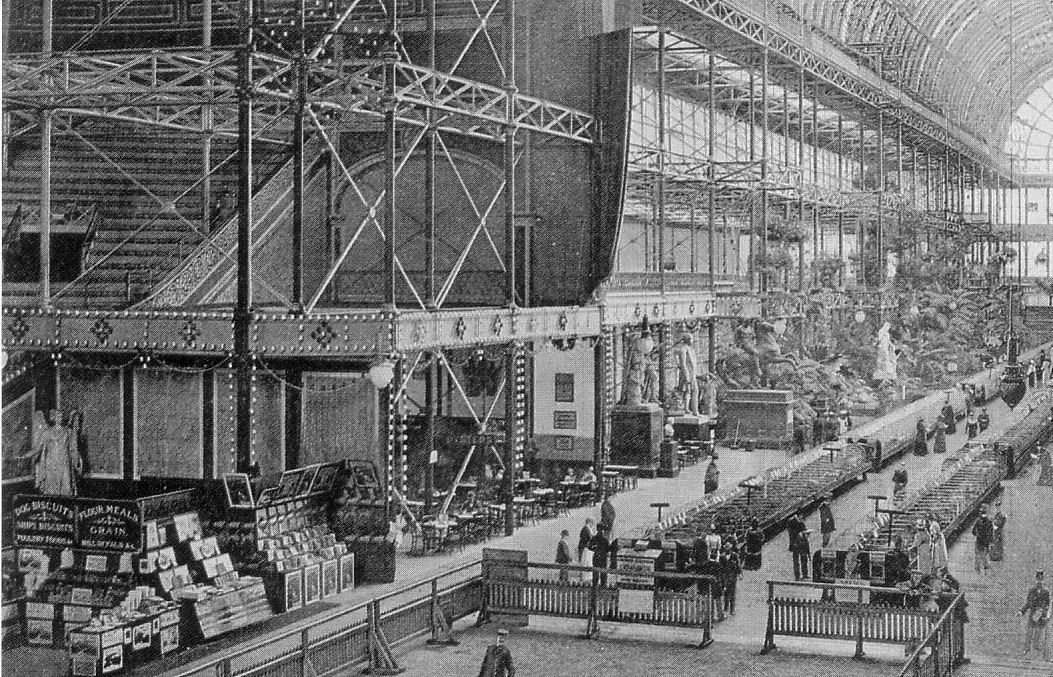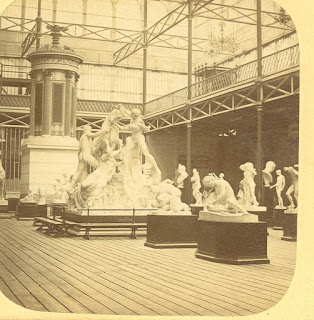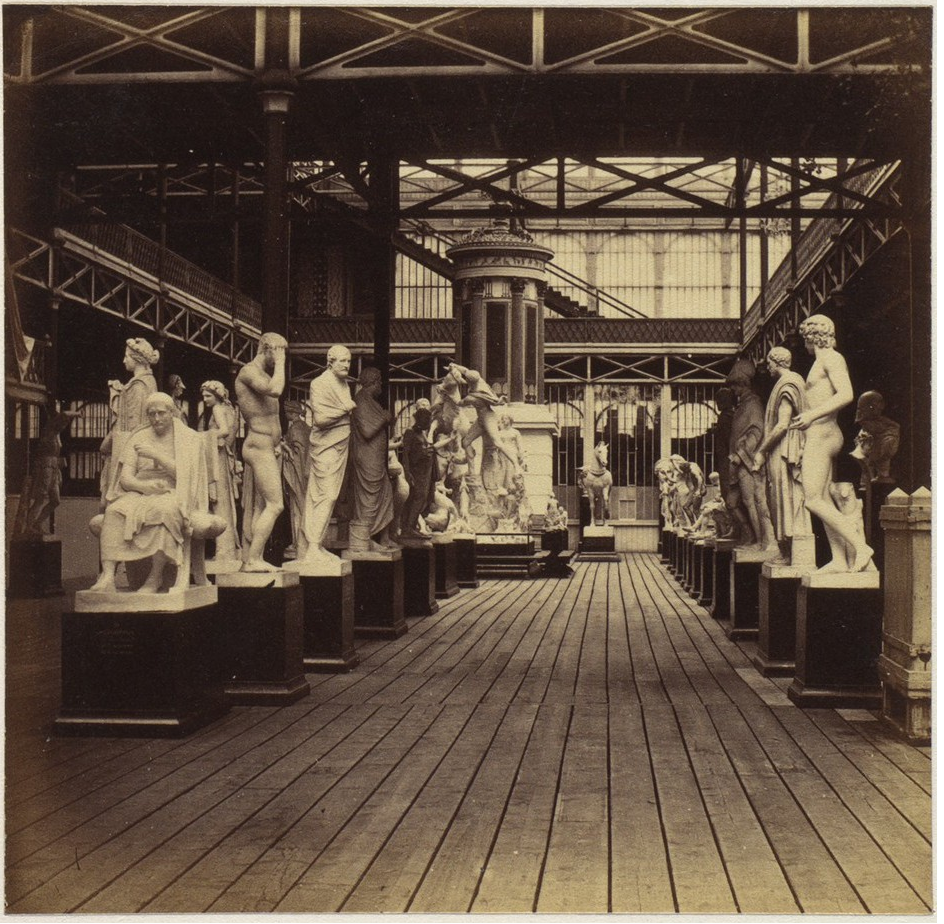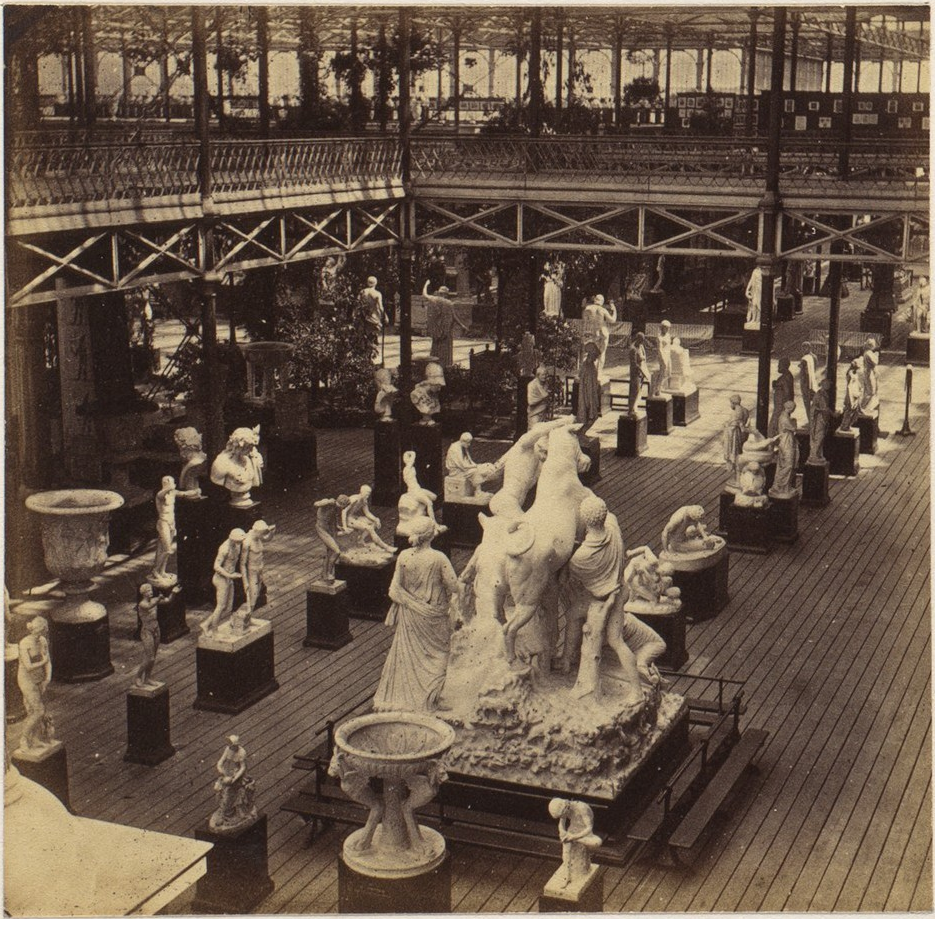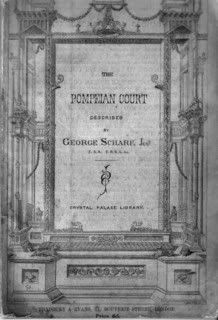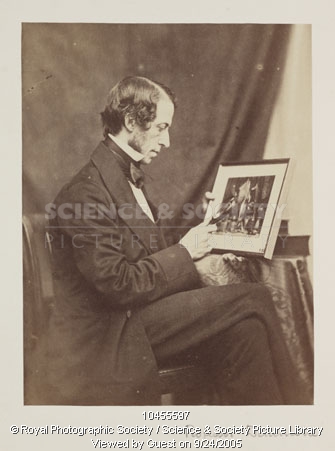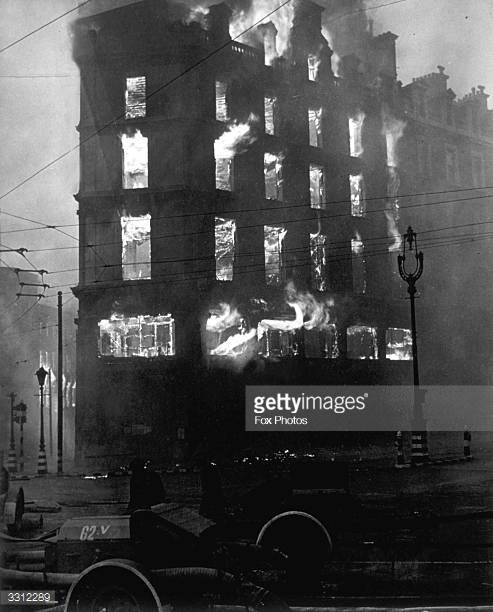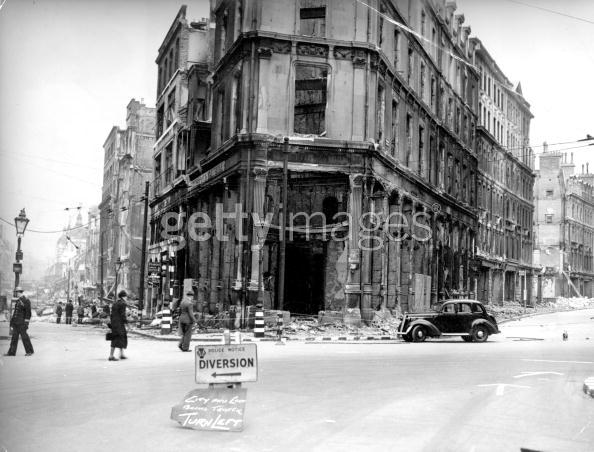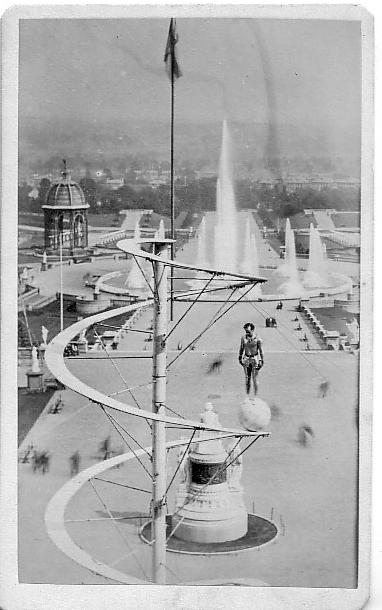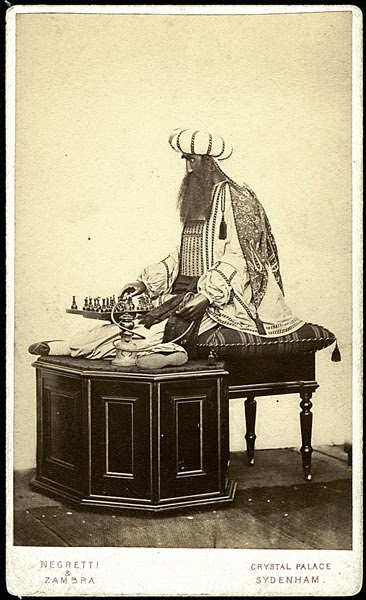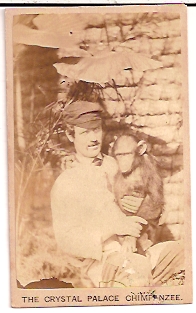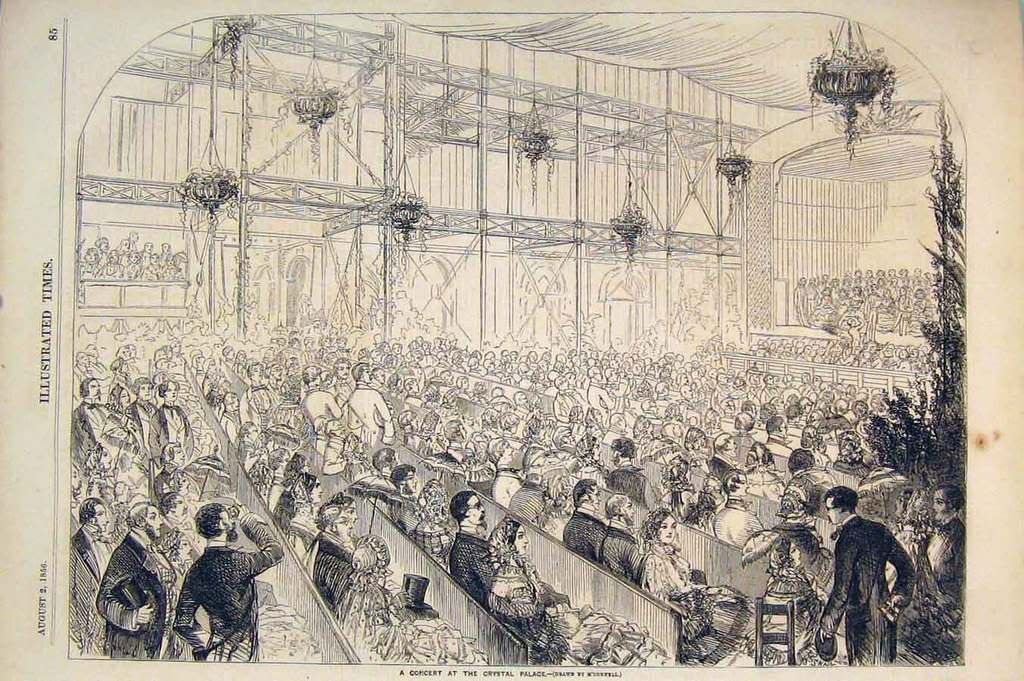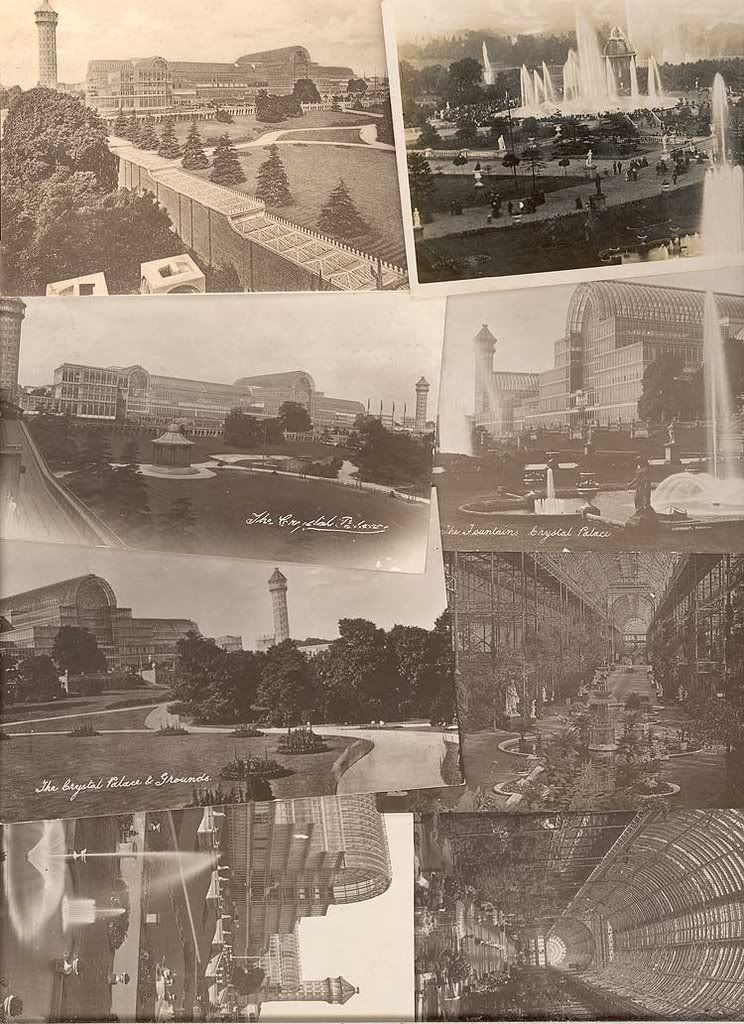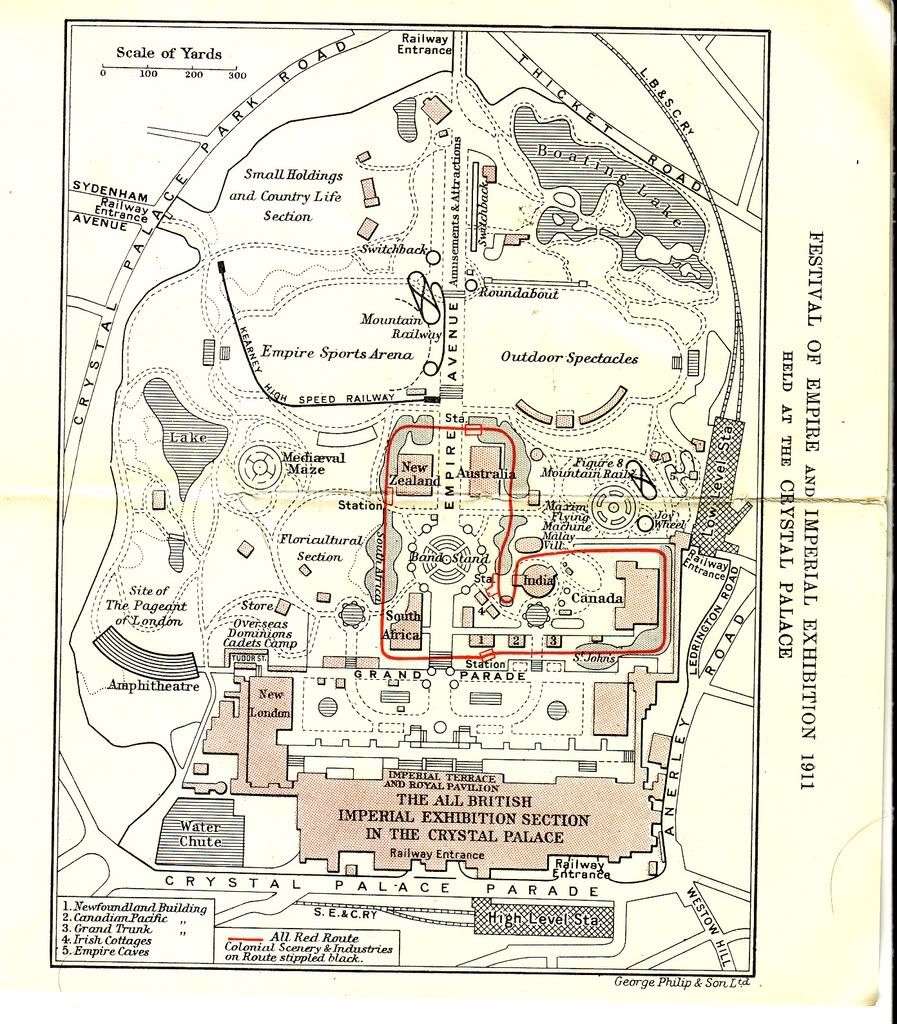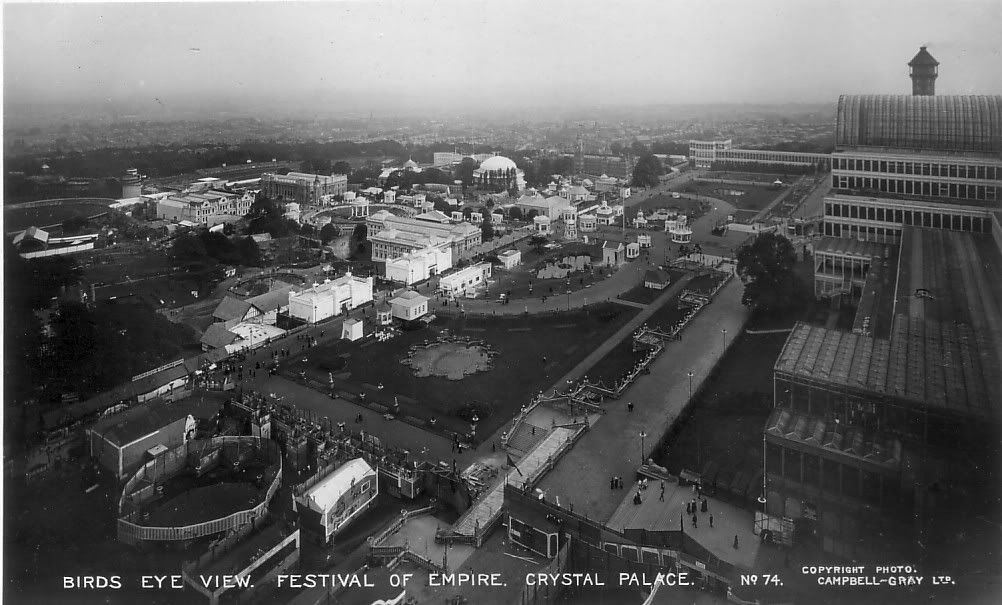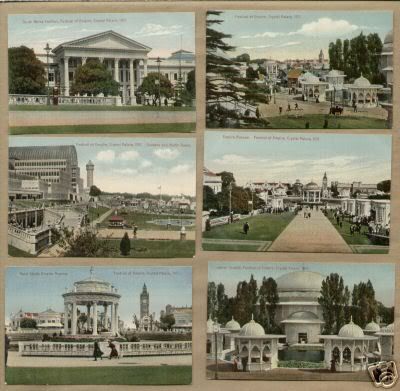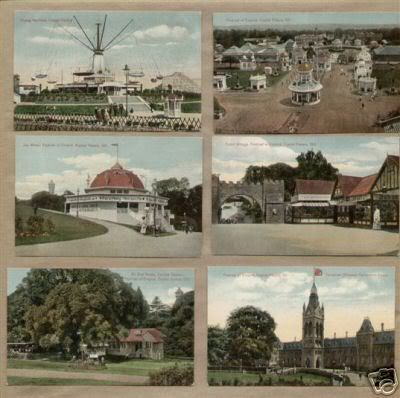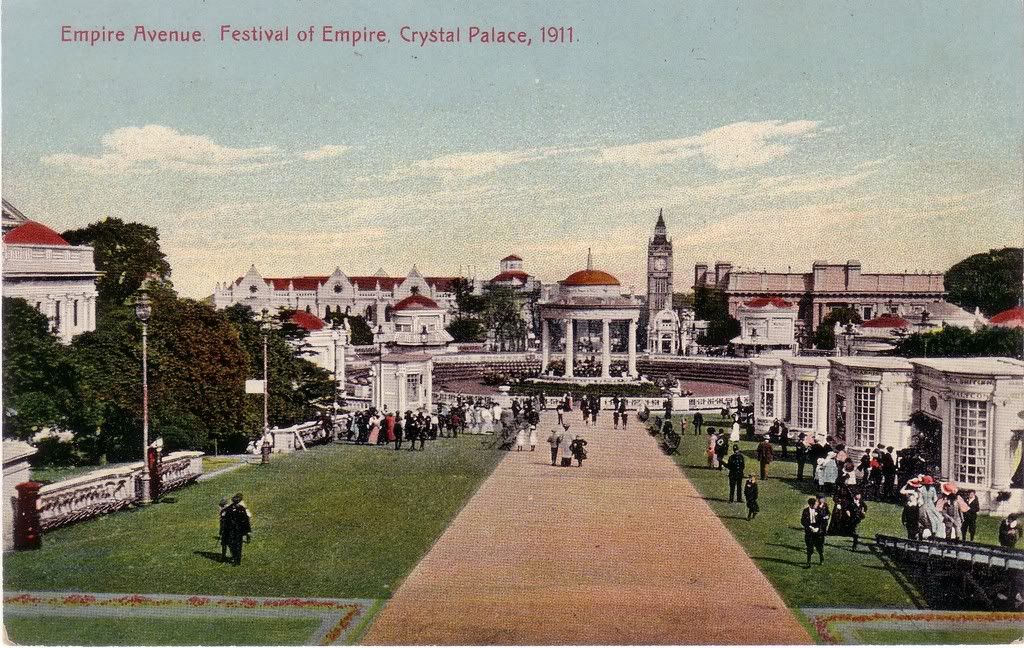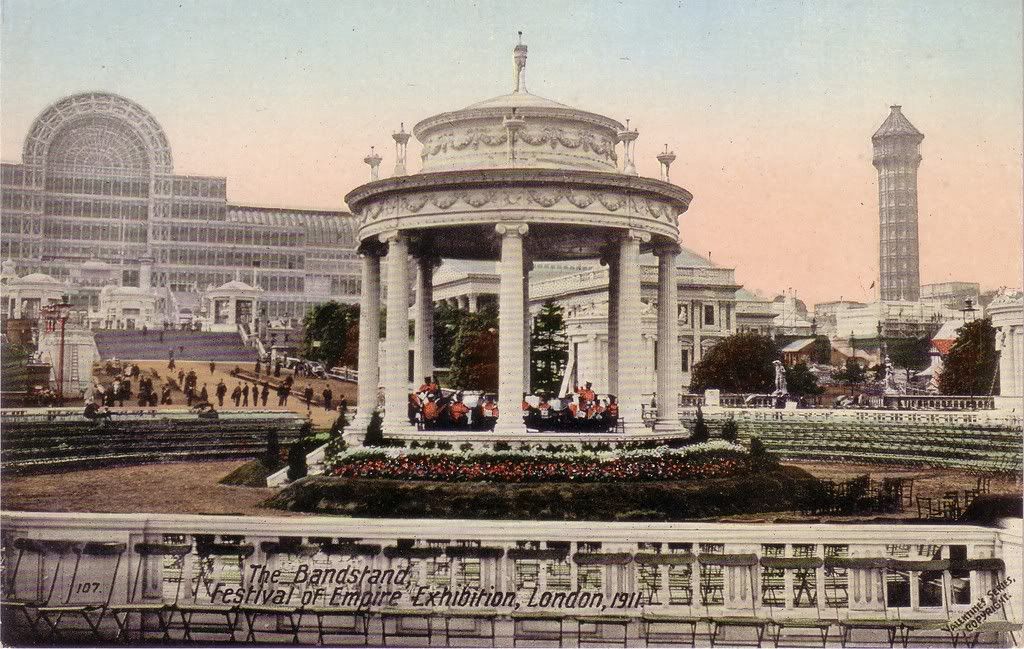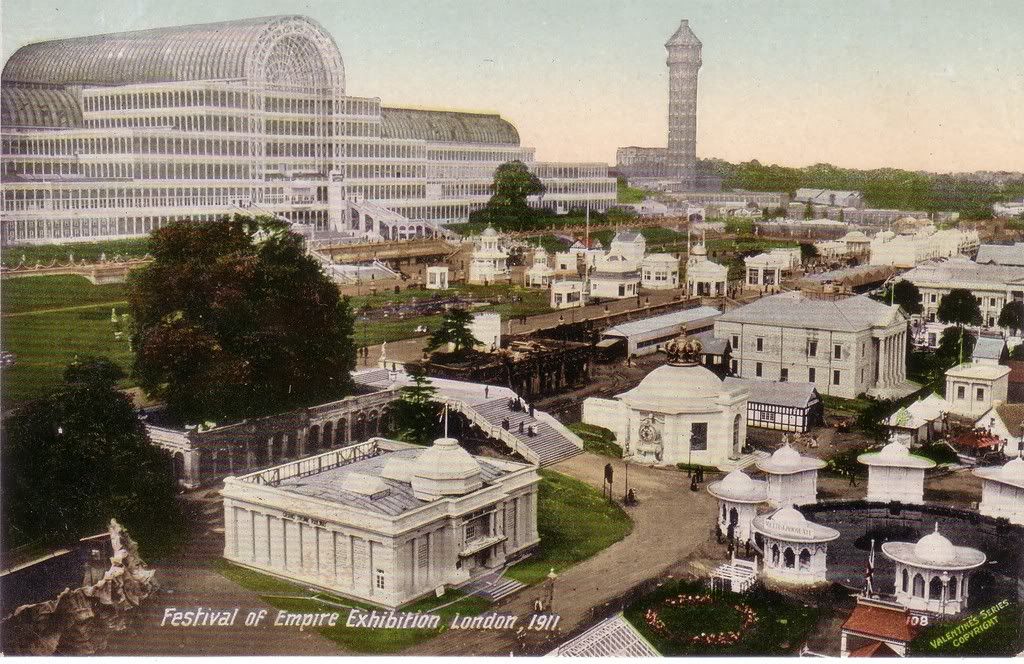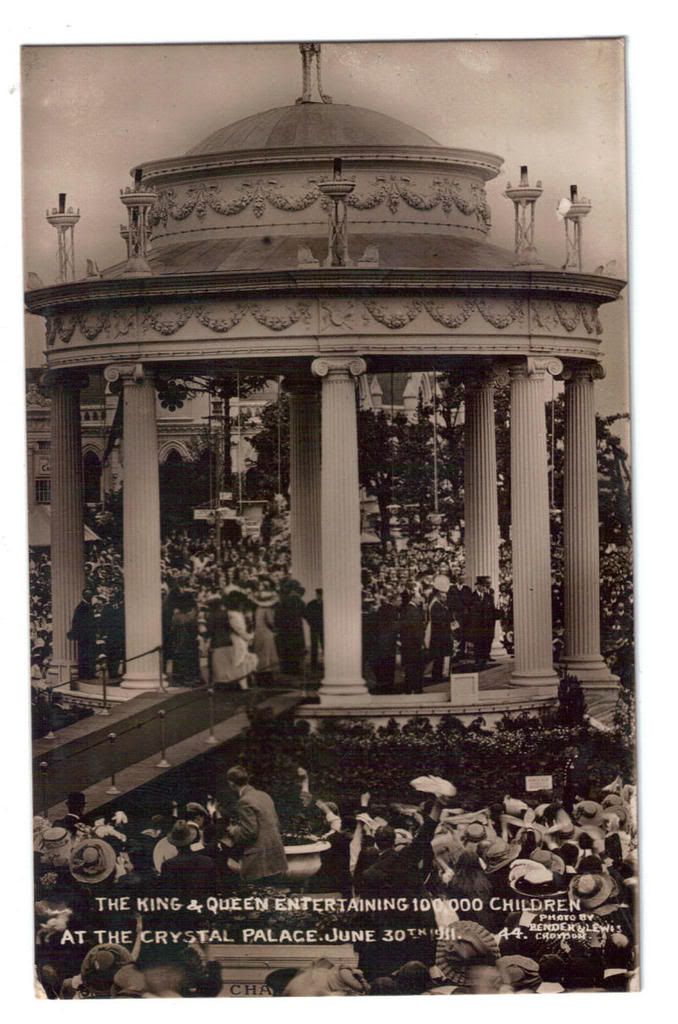THE MAIN AND UPPER GALLERIES.
Having now explored the length and breadth of the ground floor of the Palace, we ascend the flight of stairs on the garden side (South), near the Great Transept, that leads to the main and upper galleries."
The main galleries are devoted to the exhibition of articles of industry. It will be sufficient to give the visitor a general list of the objects exhibited, and to point out the situations in which the various articles of manufacture are placed. The gallery in which the visitor stands, together with its return sides, is devoted to the section of precious metals and the composed ornaments."
In the north-east gallery beyond, towards the Sydenham or North end, are placed four hundred French and Italian photographs, illustrative of the architectural and sculptural arts of the periods represented by several Fine Arts Courts on this side of the nave; the photographs being arranged in the order of the courts beneath, and as nearly as possible over the courts which they serve to illustrate."
Here also will be found a fine collection of small works of art, consisting of statuettes, medals, and architectural ornaments, in like manner exemplifying the various styles from the Byzantine down to the Italian [reflecting those courts below.]"
These photographs and statuettes are visible in the image in the Italian Court post.
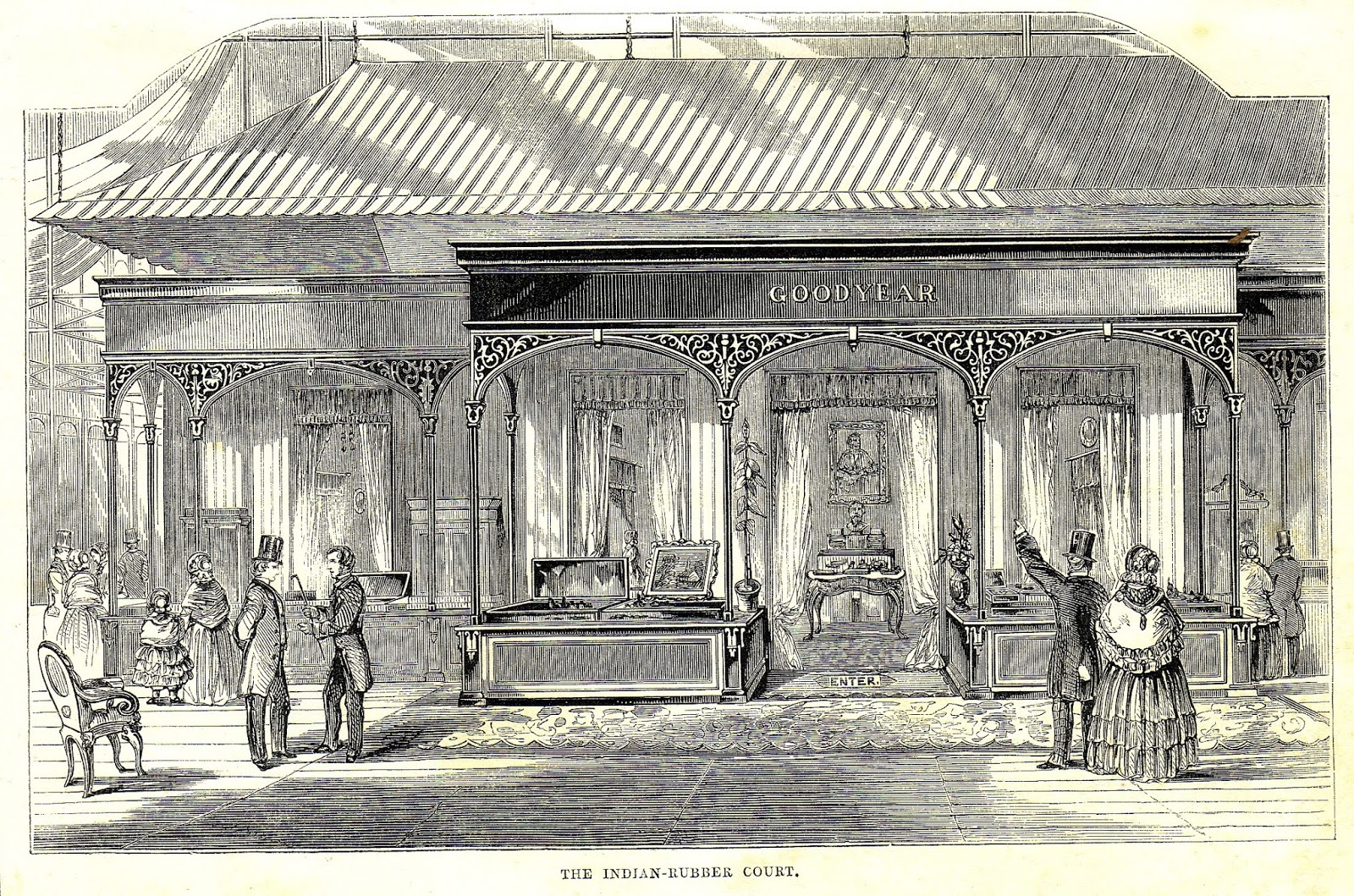
The India-Rubber / Vulcanite Court. Art Journal 1856
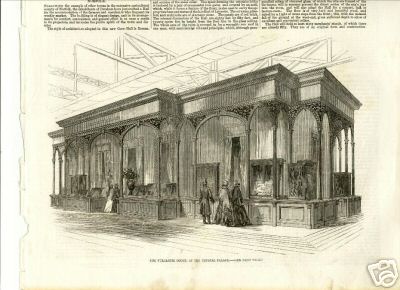
VULCANITE COURT - Illustrated London News May 9 1857
Continuing our visits to the Art Courts and depositories of Art-manufacture at the Crystal Palace, we ask our readers to ascend with us one of the stair cases which lead to the North-east Gallery, and examine a recent erection - costly in character, but in very pure taste - in which are displayed the goods of Mr. CHARLES GOODYEAR, of New York, the patentee and inventor of many applications of Indian-rubber to the purposes of Art-industry.
no very long period of time has elapsed since Dr. priestley ("Introduction to the Theory of Perspective," 1770) stated as one of the marvels of his age, the discovery of a vegetable gum which possessed the singular power to remove pencil-marks from paper; and, until very recently, this gum was used for nothing else, unless as one of the toys of boyhood, to give "springyness" to playing balls. Dr Priestley as little foresaw the uses to which it would be hereafter applied, as did he who forst produced an electric spark anticiapte the wonders of the "Telegraph." A visit to the Crystal Palace, and an examination of the contents of the stall of Mr. Goodyear cannot fail to create astonishment; for, while it will be seen how numerous are the objects already wrought out of indian-rubber, these will only convey an idea of the still larger number of uses to which it is destined to be applied.
Indian-rubber is known to be a gum obtained from trees which grow so abundantly in India, in Java, in Assam, in some parts of South America, especially Brazil, and in other places, as to produce a supply which m,ay be described as inexhaustible. Incisions are made through the bark of a tree, at certain periods of the year, from which flows a milky juice: this, when hardened by exposure to the atmosphere, is the "indian-rubber," which science has rendered applicable to all purposes for which wood can be employed, but having many advantages that wood never can havem while it possesses all the valuable qualitites of ivery or horn. It is to the objects formed of this material to which we now direct the attention of our readers. The space to which we are limited precludes for the present all comment on the nature and value of this now precious material, or the various processes through which it is passed before it is made availiable to the manufacturer; we shall, however, ere long, bring the subject, in all its details, under notice,- with a view first to aid the plans of the ingenious inventor - the inventor in so far as regards its many recent applications - and also to show the large extent of its capabilities.
About twenty years ago, various medals were awarded to Mr. Charles Goodyear, of New York, for the "new methods of manufacturing Indian-rubber;" including "applications of Indian-rubber to painting," to cloth, to shoes, &c. &c. From that time to this he has laboured with amazing vigour and perseverance, in spite of difficulties, all but insurmountable, until he has completely triumphed over them all, established large works in various parts of the States, and in Paris, and now in London, at 47, Leicester Square; while his "SHOW-ROOM" is - as we exhibit it underneath - at the Crystal Palace.
This show-room is in the North-east Gallery; it is not one of the Courts erected at the expense of the Company, but id the priovate stall of the proprietor. In grace and elegance of construction, howevere, it may be compared with any of those "structures" which ornament the lower division of the Palace; and it will, we hope, act as a stimulus, as well as an example, to producers, who, while they desire to exhibit their productions under advantageous circumstances, are willing also to adorn the building in which they are placed - thus advancing their own interests while contributing to the gratification and instruction of the visitors. Mr. Goodyear is a public benefactor by the liberality he has displayed; and there can be no doubt that all his "neighbours" in the gallery will greatly benefit by the attraction he has given to the locality in which he has placed the depot of his works. the architect of whose abilities he has availed himself is Mr. STANNARD WARNE, to whom the erection does much credit.
The stall, be it remembered, is made entirely of indian-rubber, and an examination of it will suffice to show the capabilities of the m,aterial for all the purposes of the cabinet-maker; within and without, will be noticed many works of his class - such as sofas, chairs, tables, bedsteads, drawers, work-tables, pillars and panels, with bas-reliefs. it is obvious that Art has not yet achieved what it may do for this branch of the "business;" but of the capabilities [in italics] of the material there can be no doubt: it is safe to anticipate its enormous use by the cabinet-maker for all the purposes of elegant furniture. We must content our readers by a bare enumeration of the other objects exhibited:- fruit-plates; card-trays; boxes; boxes inlaid with pearl; watch-cases; bracelets; brooches and rings, set with jewels; fruit-kives and paper-knives; ladies' work-boxes; fans; opera-glasses, jewel-boxes; toilet-boxes in great variety; picture-frames; eye-glasses; ink-stands; paper-folders; powder-flasks; corkscrews; pen-holders; pencil-cases 9of peculiar construction); drinking-cups; buttons; syringes; surgical instruments of various kinds; canes and walking-sticks; umbrellas; combs; brushes of all sorts; in fact, it will be necessary to examine the contents of this remarkable stall to obtain an idea of its variety and value, but cheifly to form a notion of the extent to which the manufacture must be eventually carried: for it will be difficult to concieve an object of utility or of Art which may not be ulitmately benefited by an invention that may not be ultimately benefited by an invention that may be applied in innumerable ways to the comforts, conveniences, and elegancies of life.
-Art Journal. 1856
In the North end, are works in porcelain and glass."
In the north-western gallery (at the back of the Assyrian Court), space is appropriated to Oriental manufactures. Here also is arranged a collection of most interesting paintings, lent to the Crystal Palace by the Honourable East India Company. They are copies of some frescoes, found on the walls of a series of caverns at Ajanta in Western India, and were made at the instance of the Indian Government, by Captain [Robert?] Gill of the Madras army.
http://www.users.globalnet.co.uk/~hadla ... _P100.html
The paintings represent scenes in the life of Buddha and of Buddhist saints, and various historical events connected with the rise and progress of the Buddhist religion in India. The collection is valuable, as affording the means of comparing the state of art in the East and in the West during the same period.
http://en.wikipedia.org/wiki/Ajanta_Caves

In the north-western Transept are specimens of photography.
Nearer the [Parade side of the] Great Transept, in the same gallery, is arranged a valuable and interesting collection of photographs, illustrative of Oriental architecture, amongst which the Egyptian remains are particularly to be remarked.
Round the west end of the Transept itself philosophical instruments, cutlery, and fire-arms will be exhibited.
In the south-western portion of the gallery, leather and articles manufactured in India-rubber occupy the space to the centre of the south transept, from which point, to the end of the building, the gallery is devoted to perfumery and chemicals.
-General Guide 1854
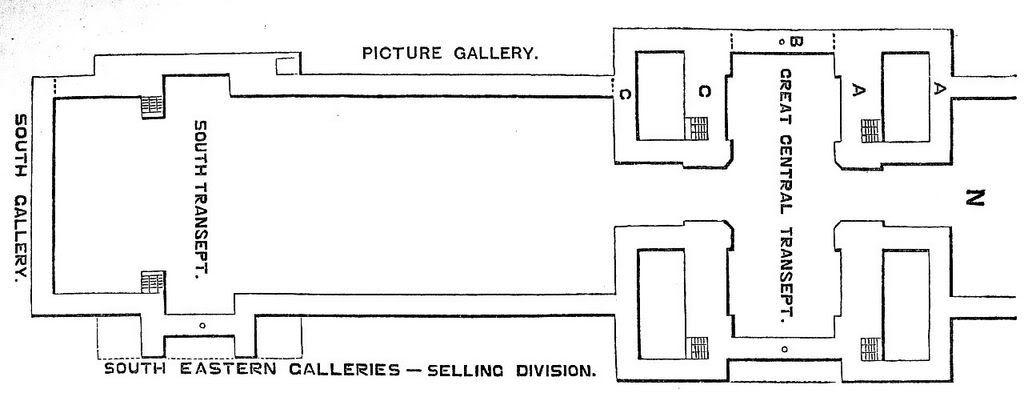
1858 Guide
As can be seen in the map above, the Crystal Palace picture gallery moved from the North Wing to the South-west quarter of the first floor by 1858.
CRYSTAL PALACE PICTURE GALLERY.
Art Journal 1862
Whatever neglect is shown by the public towards the numerous Art-works of every kind collected in the Crystal Palace - and, unfortunately, such neglect is but too universal and palpable - the picture gallery does not share; on the contrary, it is a great feature in the contents of the building, and its attraction is proved by the large number of visitors who constantly throng it, and its utility both to artists and the public by the sales effected through Mr. C. W. [Charles Wentworth] Wass [ 1817 - 1905, who seems to have gone bankrupt with his own gallery in New Burlington Street in April 1858], who, as superintendent of the gallery, performs his duties in the most satisfactory manner. The plan adopted there of having the price of each work distinctly marked upon it saves trouble to all parties. Any person seeing a picture he desires to possess, learns at the same time what it would cost, leaving him at once to reject or accept it as he pleases. Moreover, the gallery is constantly receiving novelties; for, when a painting is purchased, it is removed immediately, or within a very short time, and its place supplied by another. As a consequence, every month necessitates the publishing of a new catalogue.
It would be folly to compare the collection at Sydenham with what we are accustomed to see annually in the picture galleries of London. The object of the Directors of the Crystal Palace has been to allow any works, except copies - which, however, are admitted under certain special circumstances - to be hung on the walls, subject only to the judgement of the manager, who has the power to reject whatever he may deem inadmissible. Under such conditions, the exhibition assumes, as might be expected, a very miscellaneous and unequal character - a mixture of good and indifferent; it is a collection suited to a variety of tastes, and to purses more or less furnished with means to purchase; and this is an advantage not to be lost sight of.
The catalogue placed in our hands when we last visited the gallery gives a list of upwards of twelve hundred works of Art of all kinds, including the "Victoria Cross Gallery," the series of well-known pictures by Mr. Desanges, which occupy a room by themselves; they are forty-seven in number. The remainder may be thus classified:- upwards of five hundred oil paintings, about four hundred by foreigners, one hundred and four water-colour drawings, about sixty copies in water-colours of pictures by Turner in the National Gallery, and of a few by other English painters, and nearly sixty examples of sculpture. Among the names of British exhibitors (we take them as they appear, and not in what may be presumed as order of merit) are those of
Selous
G. Pettitt
J. A. Houston A.R.S.A.
A. Cooper, R.A.
Branwhite
Panis
M. Claxton
Stark
Lance
Desanges
Miss Kate Swift
Niemann
G. D. Leslie
Hopley
Wingfield
Holland
J. Archer R. S. A
Tennat
Pasmore
J. Chalon R.A
Meadoes
J. J. Hill
Henshaw
Parker
Luker
F.S. Cary
Miss E Osborn
G. Chambers
Miss A. F. Mutrie
B. R. Faulkner
W. H. Paton A.R.S.A.
J. Ward R. A.
A. Johnston
Louis Haghe
Kennedy
J. H. S. MAnn
C.Lees, R.S.A
R. Solomon
F. W. Watts
Montague
R. S. Lander, R.S.A
John Martin
Egley
Mrs. E. M. Ward
and others.
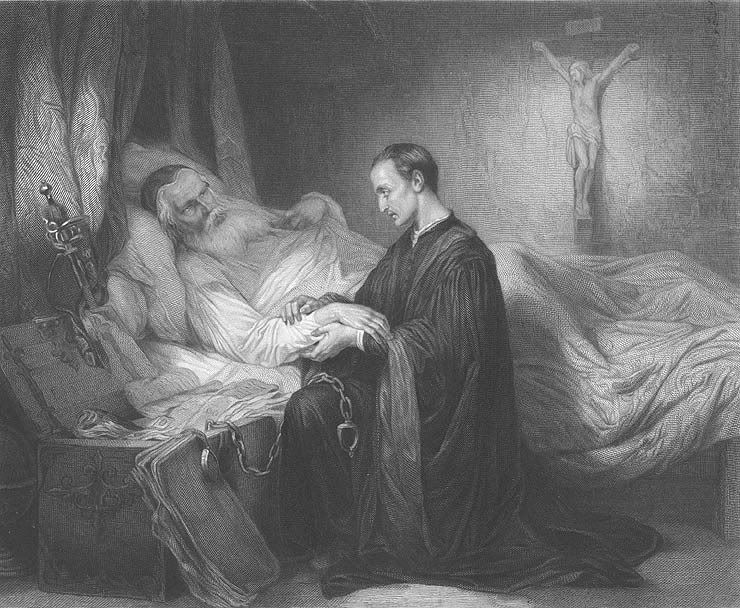
The foreign schools are, as a whole, better represented, perhaps than our on; French, Belgian, and German, each contributing its quota. At the head of these is Baron [Egide Charles Gustaf/ Gustave] Wappers [1803 - 1874], of Antwerp, with his 'Death of Christopher Columbus.' [above]and 'Anne Boleyn taking leave of her Daughter, Elizabeth, afterwards Queen of England;'
Beard's four paintings illustrative of 'Slavery' follow close after;
then there are works by
Seghers,
Stocquart,
Verhoevin Ball,
Caraud,
Van Luppen,
Frere,
Weiser
Claes
Van Meer
Duval
Berthoud
De Nater
Colin
F. Gons
De Loose
Van Shendel
Coomans
Verboekhoven
Van den Eycken
Tschaggeny
Bossuet,
and many others.
That part of of the gallery devoted to water-colour pictures is by no means the least interesting. The copies of the "Turner" paintings, &c., make a brilliant show; in a word, the whole collection deserves, as it daily recieves, the notice of the many visitors who find their way to it.
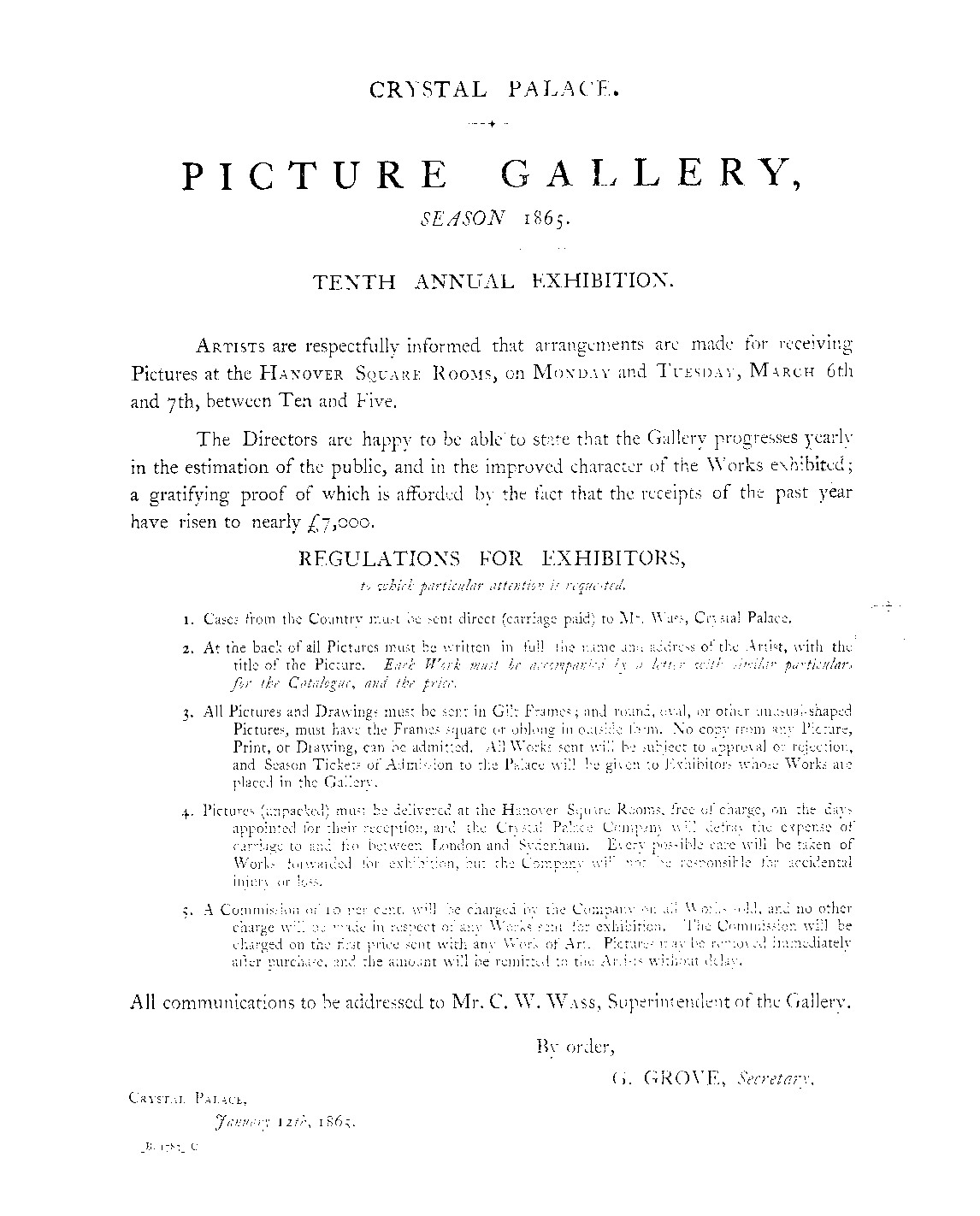
THE CRYSTAL PALACE PICTURE GALLERY. - It is with much regret we learn that Mr. Charles Wentworth Wass is about to withdraw from the direction of the gallery - from the post he has occupied during twenty-two years, honourably, faithfully, and most successfully, for the benefit of the profession and the public. The Crystal Palace also has largely profited by his services: that is so notorious as not to need a word. He will carry with him the respect of all (and the number is very large) with whom he has been associated. The gallery, it seems, is to be let to a foreign picture dealer, who is not expected to be guided by a desire to advance the interests and extend the influence of British Art; he will be a dealer - neither more nor less, and, if we understand rightly, will act "on the pemises" as an auctoneer once a month. The change cannot be other than a calamity.
Minor Topics, Art Journal April 1880 page
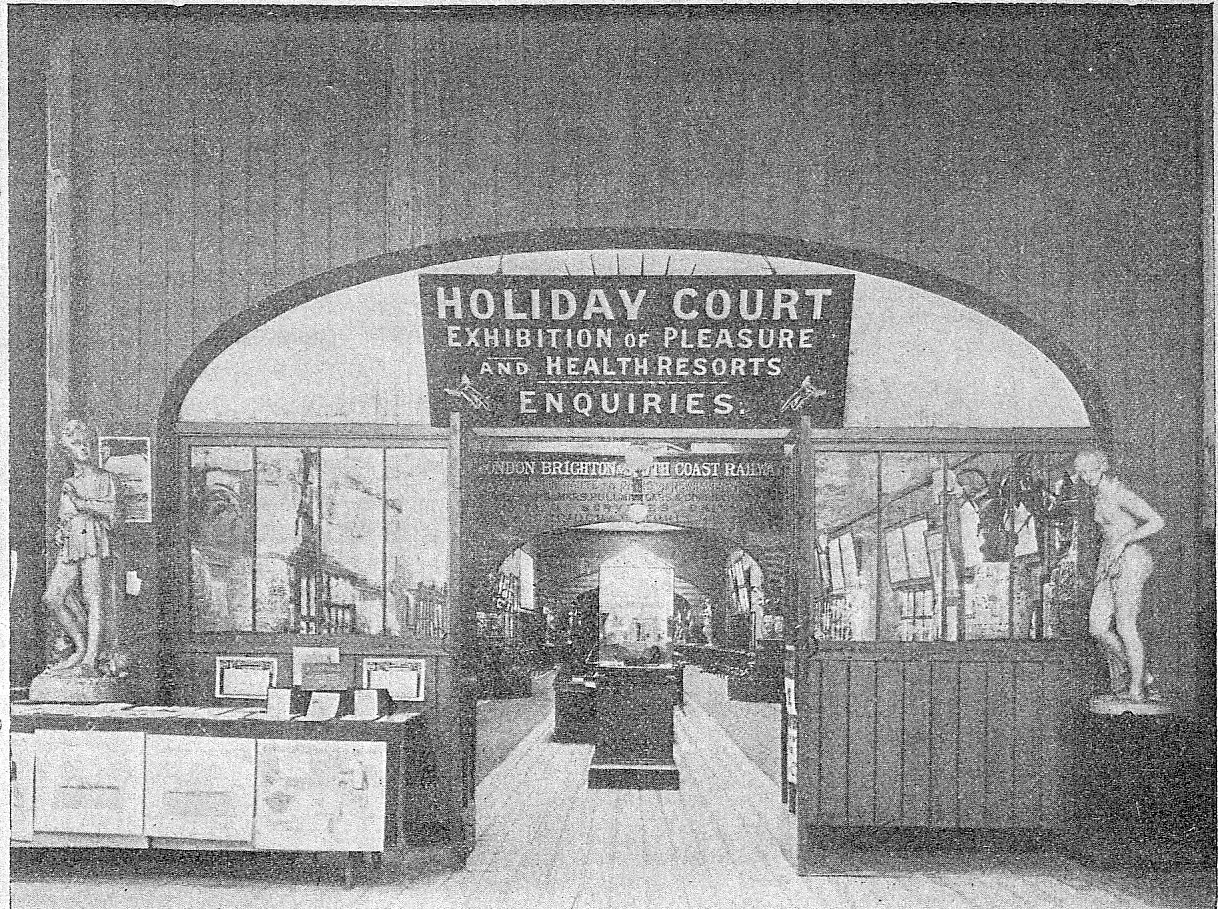
The Picture Gallery as the "Holiday Court," ca. 1905 from the north entrance. "The Young Dick Whittington" by Charles Bell Birch is on the left, and a nymph also exhibited at the Great Exhibition, by Richard James Wyatt to the right.
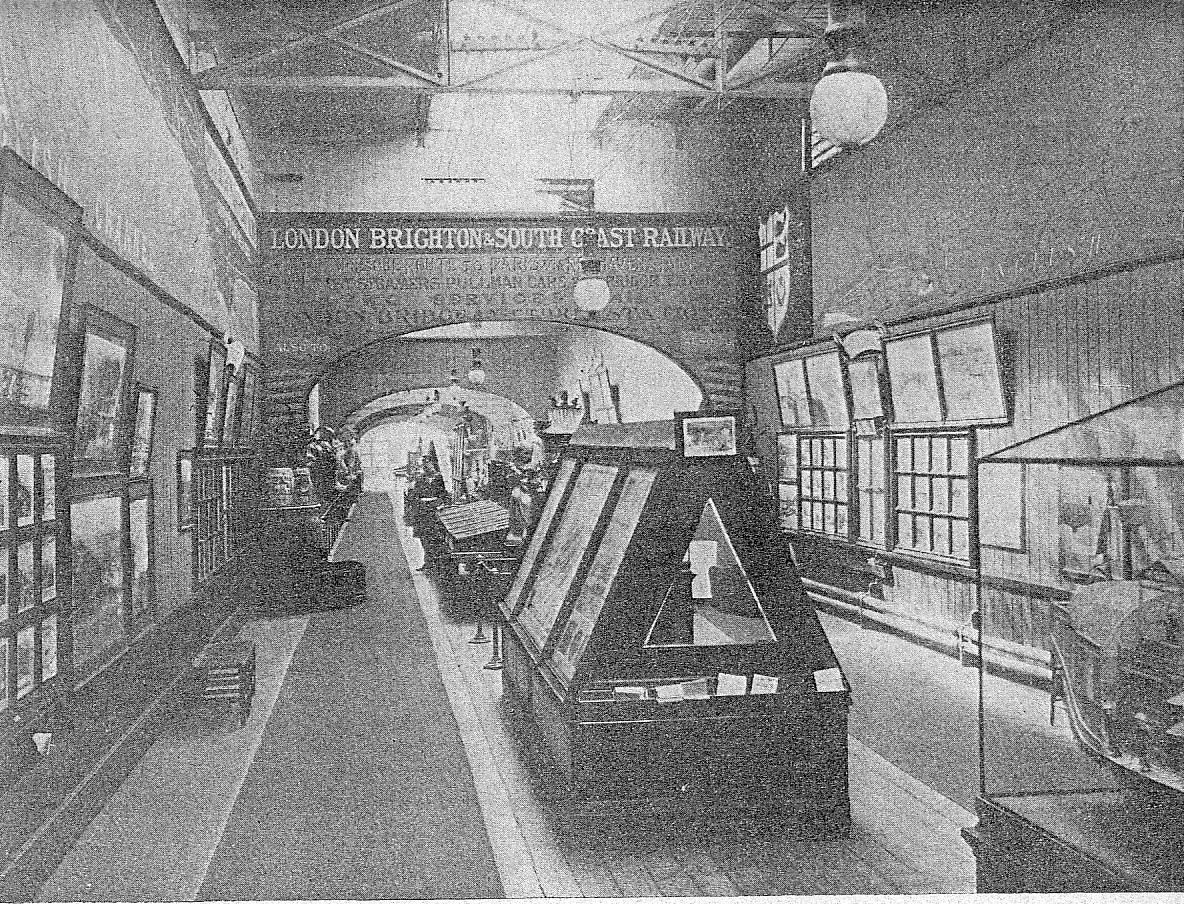
The interior of the "Holiday Court, ca. 1905."
Along the south gallery, articles of clothing are displayed. Next to these are various miscellaneous articles, including work-boxes, fishing tackle, and the thousand and one objects of general use."
"From this department[south-eastern], to the point in the gallery to which we first led the visitor, the space is appropriated to the department of substances used as food."
The visitor may now ascend the flight of spiral stairs in the central Transept, and step into the upper gallery, which is carried round the building, where a curious effect is produced by a series of circles extending along the building, and formed by the casting of each of the girders in four pieces.
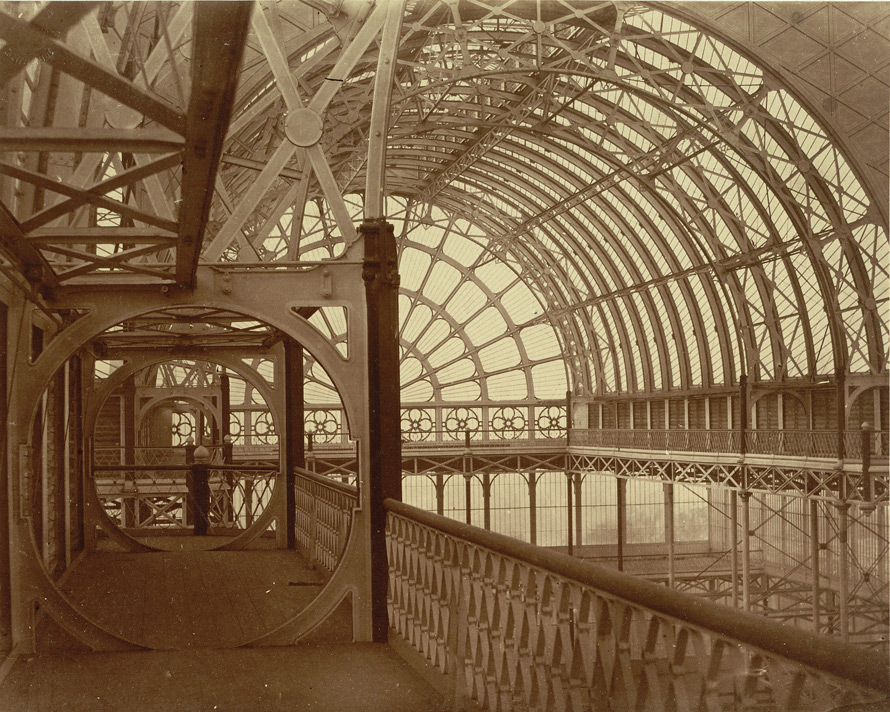
From this gallery a view is obtained of the whole length of the nave: and if we station ourselves at any angle of the north and south transepts, the nave will be seen to the greatest positive advantage.
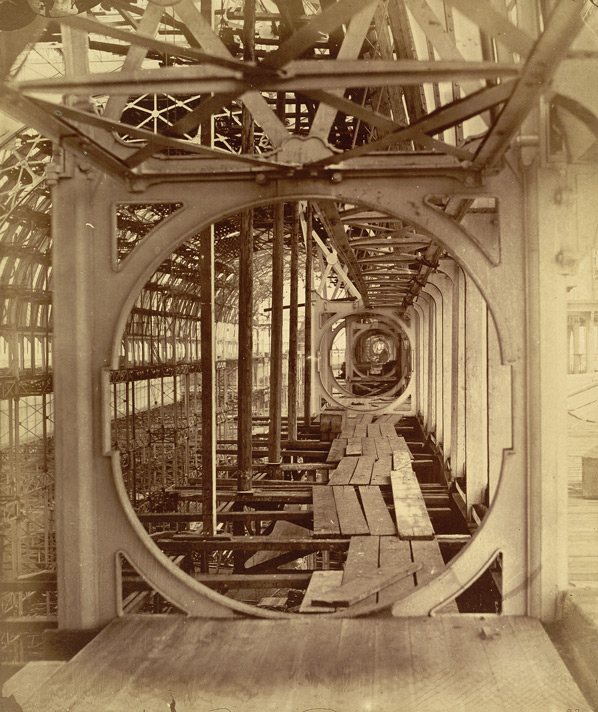
A still higher ascent up the winding staircase brings us to the gallery which extends round the centre transept itself; and from this great height, nearly 108 feet above the level of the floor, a noble bird’s eye view is gained, and the large Monte Cavallo group below, as well as the modern Castor and Pollux, sink into comparative insignificance."
On the first small gallery, above the main gallery in the central transept towards the road, will be found an exceedingly interesting collection of drawings and models for the fountains in the Crystal Palace, which have been furnished by:
Mathew Digby Wyatt (1820 1877)
Designed Byzantine, Mediaeval, Renaissance and Italian Courts, and the Screen of Kings and Queens.
Owen Jones (1809-1874) (the figures on whose designs were modelled by Signor Raffaelle Monti)
Designed Egyptian, Greek, Roman and Alhambra Courts. Also the colour scheme of both the Great Exhibition and Crystal Palace.
Mr. John Thomas (1813-1862)
Designed Musical Instruments Court, and ststues of Kings and Queens, and the Shakespeare Monument on the terrace.
Mr. John Bell (1812-1895)
Designed several of the upper terrace figures and the Triton fountain.
Baron Carlo Marochetti (1805-1868)
Designed some of the upper terrace figures and Richard Couer de lion and Queen Victoria, {on a horse].
Baron Launitz (1797-1869).
Designed Gutenburg Monument.
M. Hector Horeau (1801-1872) .
The models display much artistic treatment, and no small amount of inventive fancy.
At a very early period, a sum of one thousand was set aside for premiums to be awarded to artists who should produce suitiable dsfings [for the fountains.] These designs were not left open to general competition, but a few artists were selected and required to send in drawings, for which they would be paid. the designs of the fountains were to be embelmatic of commerce and the peaceful and industious arts.
In due course, the directors recieved the models and drawings, many of which showed considerable taste, while others were totally unsuited for displays of water, and some were impracticable, and impossible of execution. there were fountains of ancient art, and modern art, ancient poetry and modern poetry, ancient philosophy and modern philosophy. then there were fountains sacred to agriculture and to commerce; to Flora and to the Graces; to animal life, and vegetable life; to all nations and to all climes.
Among the boldest of these designs was one contibuted by a famous French artist - [Hector Horeau surely?.] It was intended to be a colossal glass globe of seventy feet in diameter, which was to occupy the centre of one of the basins, and the interior of which was to be fitted with walks and galleries. The globe was surmounted by a metal figure of Britannia, 200 feet in height, the head of which would be some feet higher than the top of the great transept of the crystal palace. The metal of which the figure was to be constructed was of polished zinc; the form was that of Minerva, and in the top of her helmet was to be placed a bright star formed by an electric light, and which could be distinctly seen for several miles round London. Immense coloured glass banners, bearing the devices of the flags of every nation, were to be grouped around the feet of Britannia, while jets of water, flying in every possible and impossible direction, crossing and re-crossing each other and in the most admired disorder, were to play over the head and around the body of this glistening and light-shedding Minerva.
It is hardly necessary to say that the latter design was not accepted, nor were any of the others; and it was finally decided out of the materials afforded to construct some designs which would be considered at once suitiable and practicable.
-Routledge's Guide to the Crystal Palace. 1854
BASEMENT - MACHINERY DEPARTMENT
Descending the staircase by which we reached the transept gallery, we regain the main floor of the palace, and proceed to the basement story, a portion of which, on the garden side, is appropriated to the exhibition of machinery in motion.

1858 Guide.
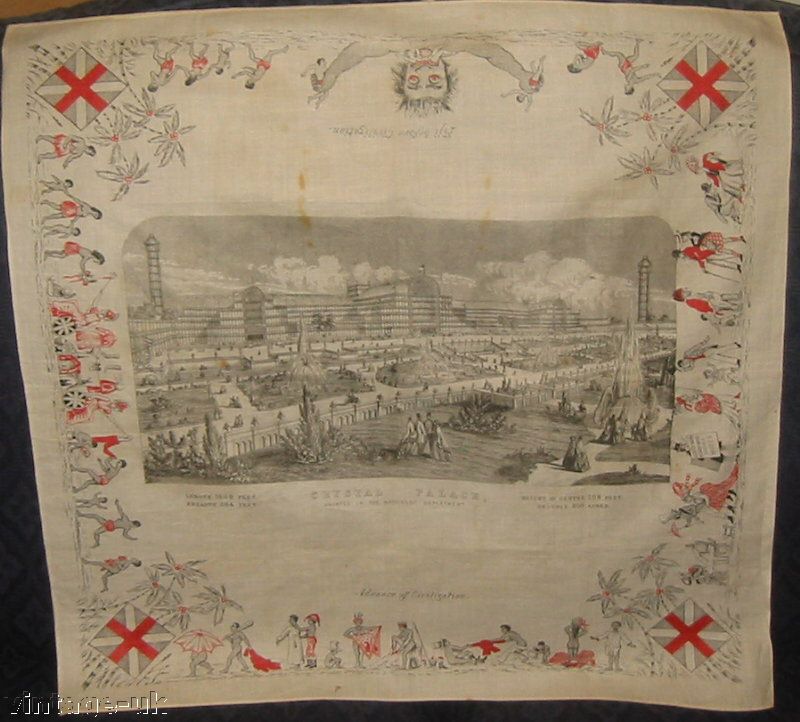
"Printed in the Machinery Department."
http://cgi.ebay.co.uk/Crystal-Palace-So ... dZViewItem
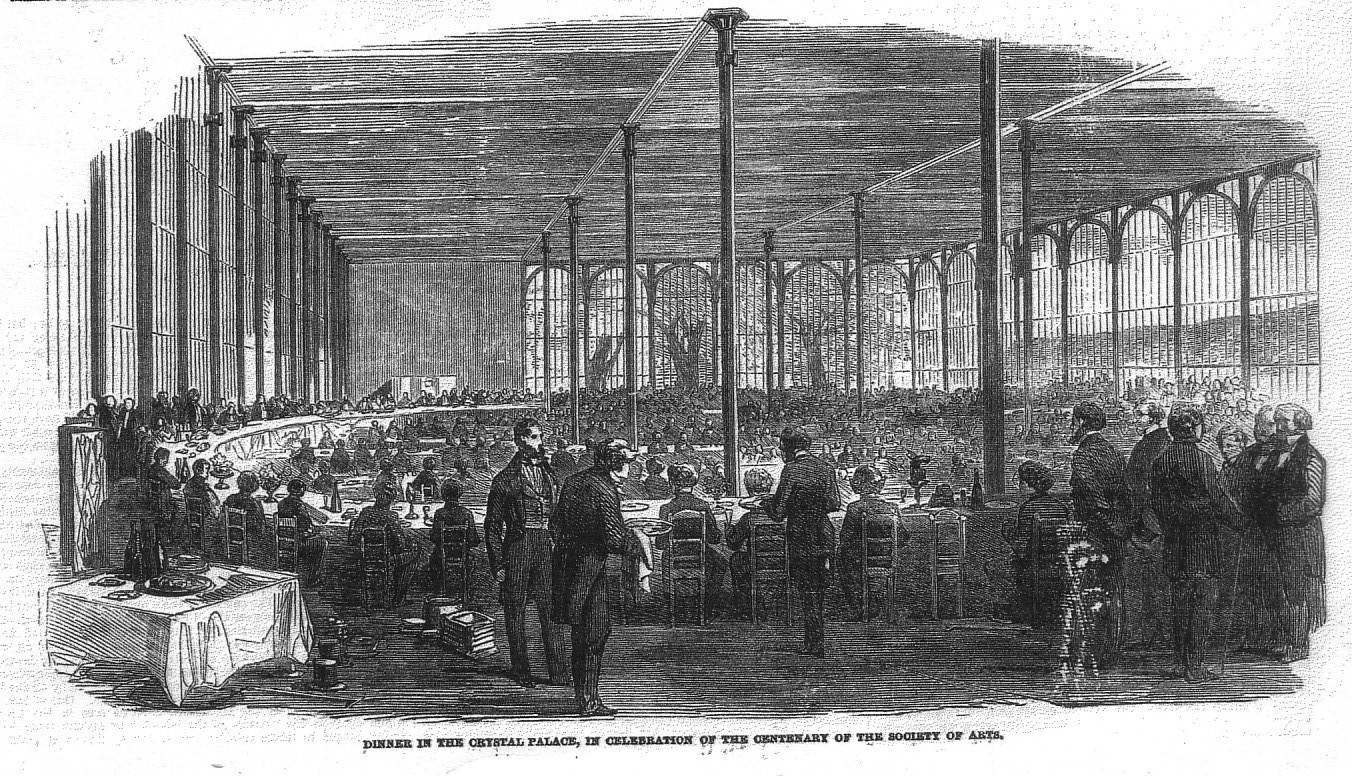
SOCIETY OF ARTS - THE DINNER AT THE CRYSTAL PALACE.
Last week we gave an abridged report of the Centenary Dinner of the Society of Arts, Manufactures, and Commerce; and this week we have given an illustration of this interesting festival, which took place at the Crystal Palace, Sydenham.
As the society of Arts claims the honour of the parentage of the Great Exhibition of 1851, and as the Crystal Palace stands in filial relation to that great event, the Council of the Society of arts very properly considered it both agreeable and appropriate that, on completion of its first centenary, its members should assemble under the auspices and protection of the roof of its famous crystal grandchild. This venerable Society of arts is certainly one of the most prolific of parents. Originally founded as a society for the promotion of arts and manufactures, it soon outstripped these narrow dimensions, and took "commerce" under its protection. Its all-embracing arms have, during the past year, been thrown around the sacred cause of "education," and its educational exhibition, which opened last week, promises to be as successful as any of the previous efforts of the society. A society with objects so varied, and ramifications so extensive, could not certainly have selected a more appropriate place for its reunion than within the walls of an institution having in common with itself many kindred objects, seeking by vast and novel means to obtain those ends; and possessing most excellent cuisine, and a lofty and well-ventilated dining-room.
ILLUSTRATED LONDON NEWS July 15, 1854.
This must be in the basement, as the ceiling is too wide to be anything but the underneath of the ground floor. I am suggesting that this could be the area in the south transept, as there is a coner and the catering department is described as taking up the south wing. These proved inadequate and brick buildings were erected where the gardens next to the Triangle now are.
Passing on now, through the opening under the east end of the central transept, the visitor finds himself standing before -
THE PARK AND GARDENS
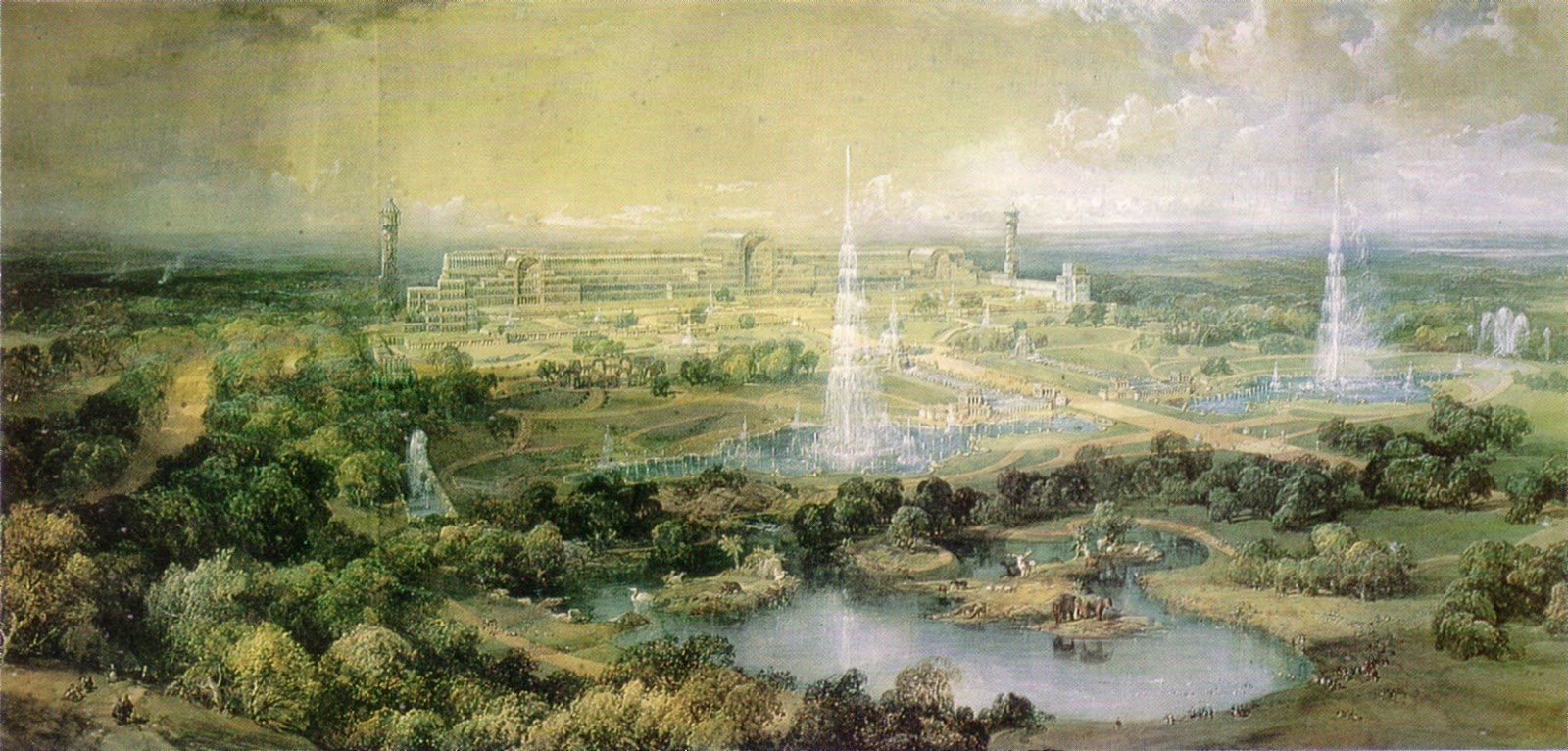
I'm going to cover this subject in the following thread: "Statues and Fountains in Crystal Palace Park"
https://sydenham.org.uk/forum/viewtopic.php?t=1538
